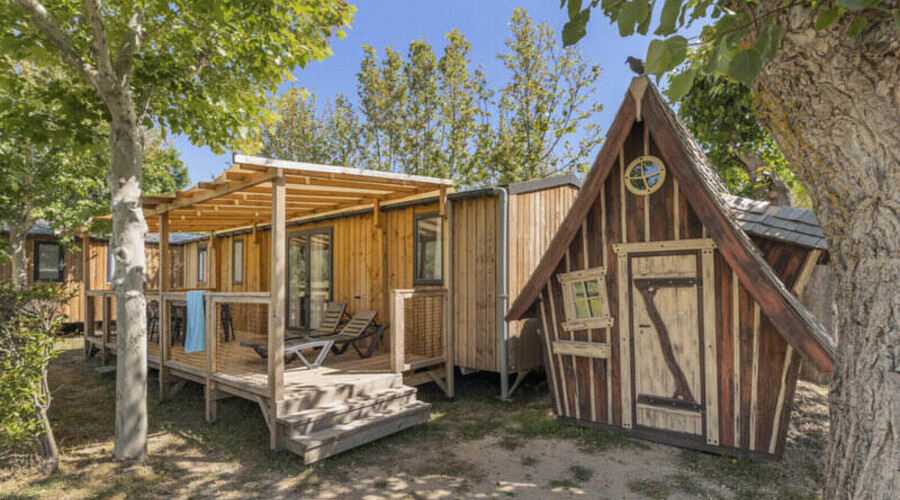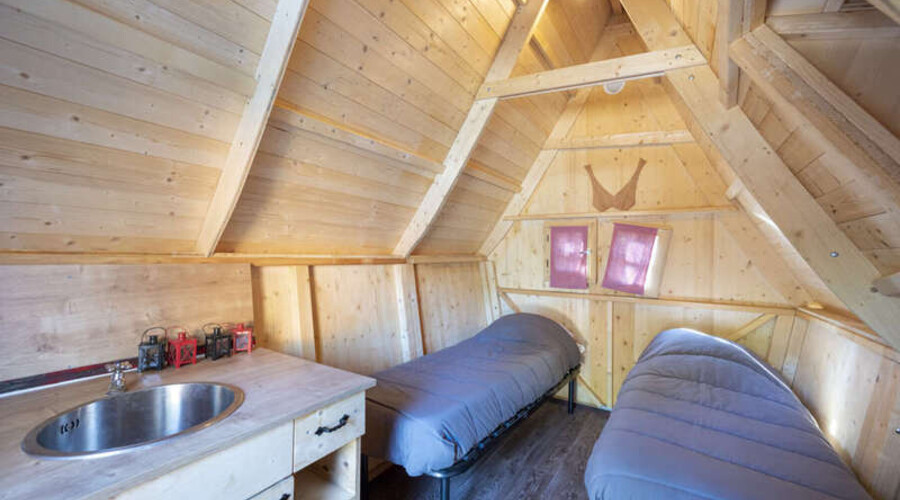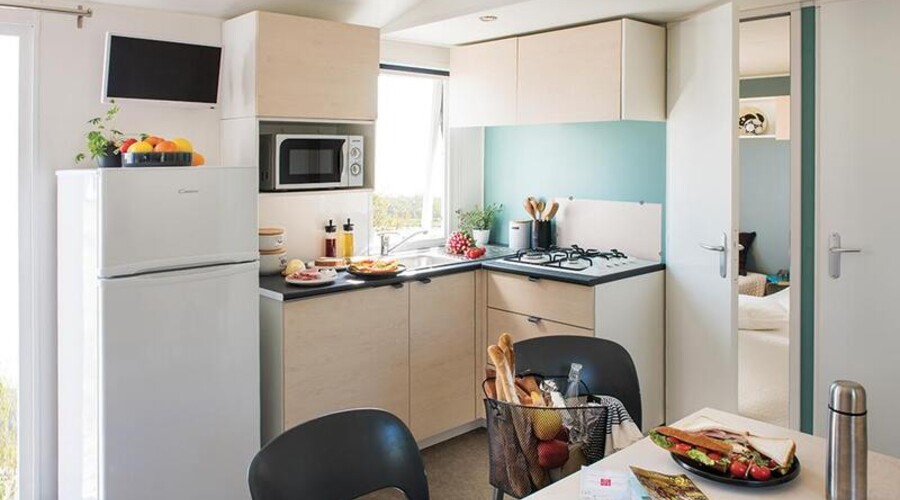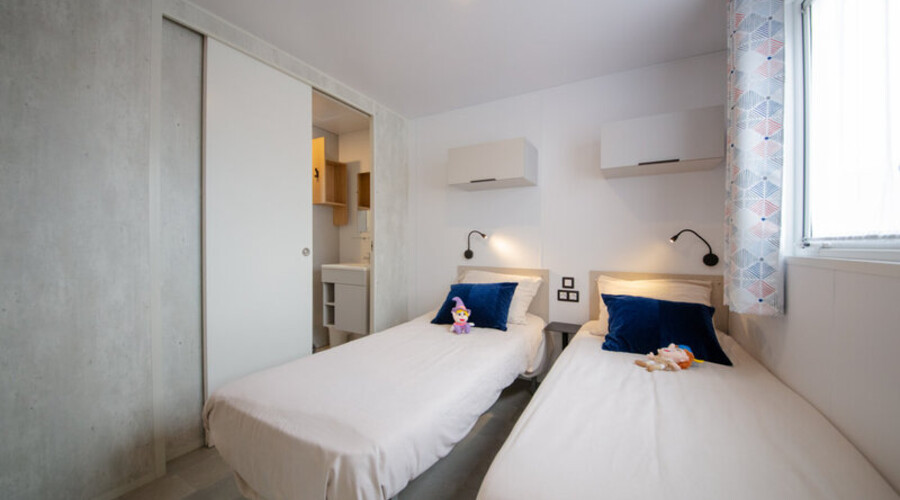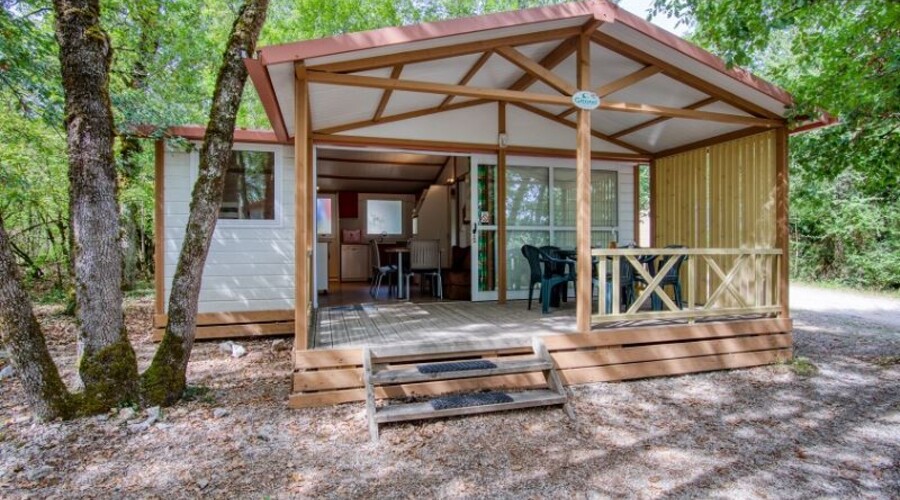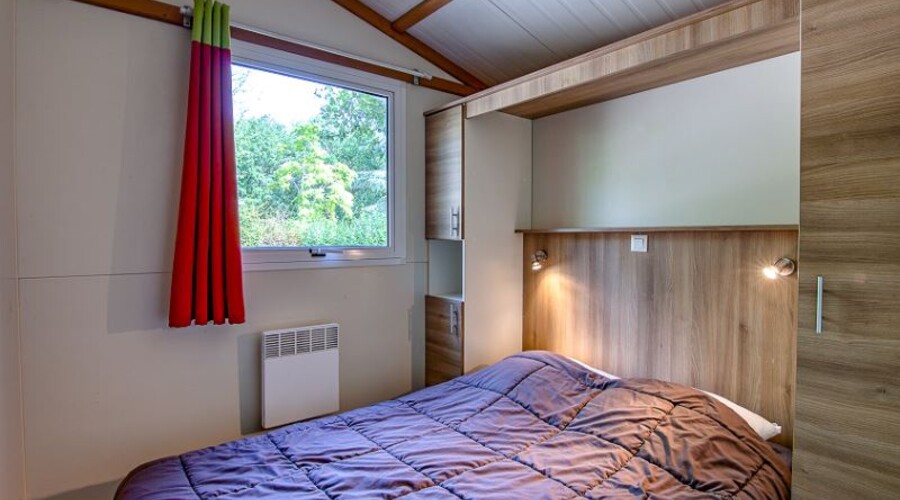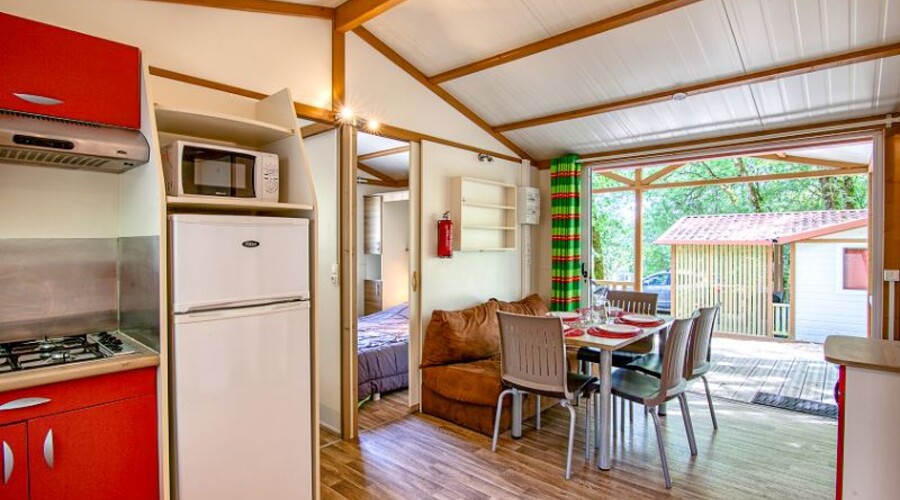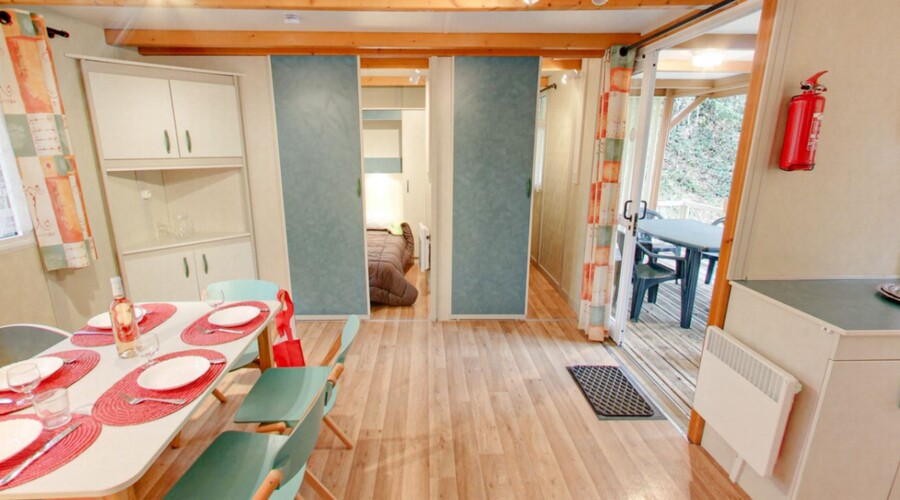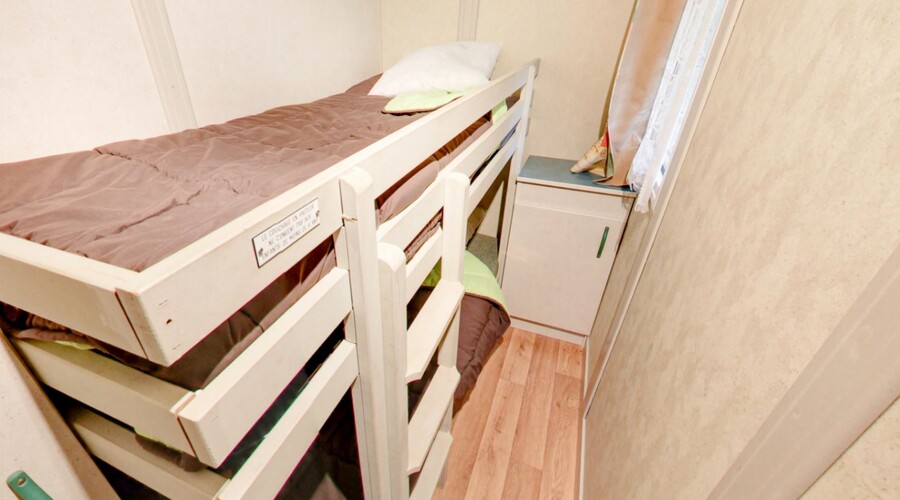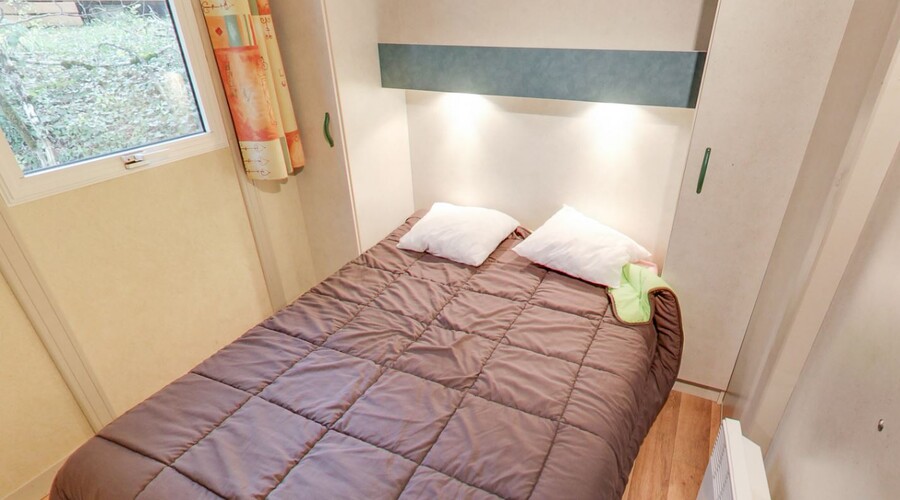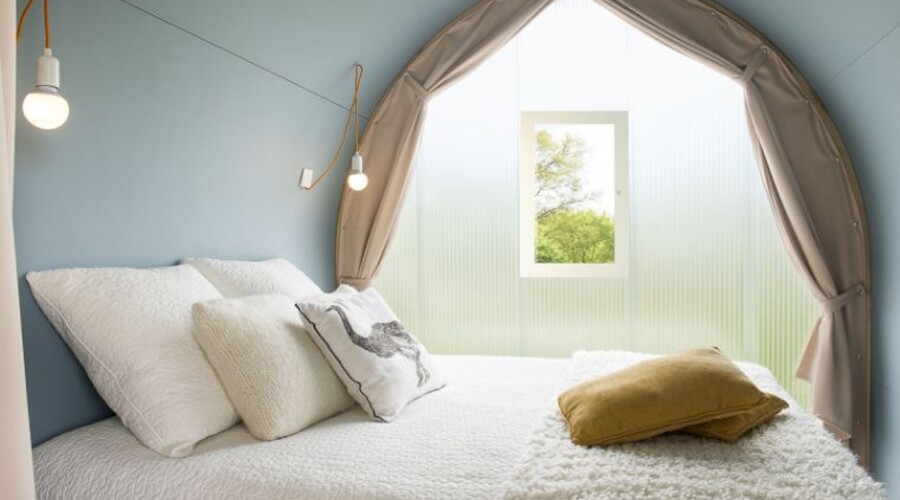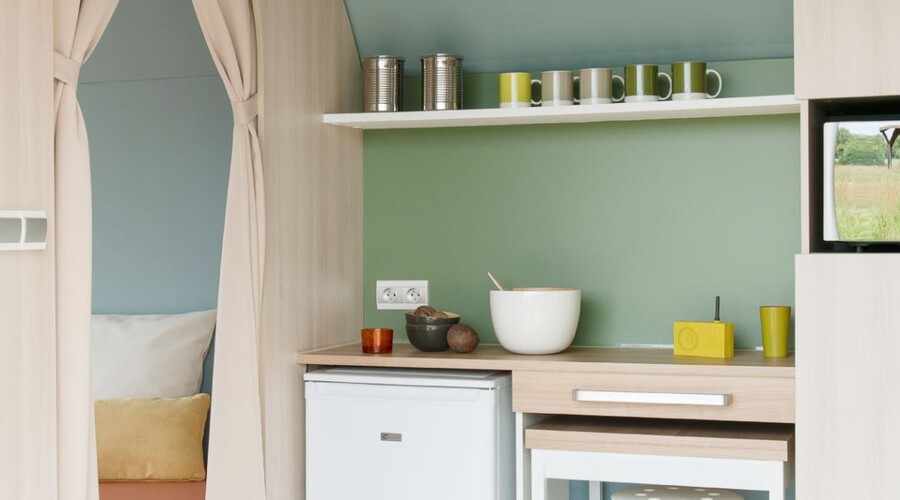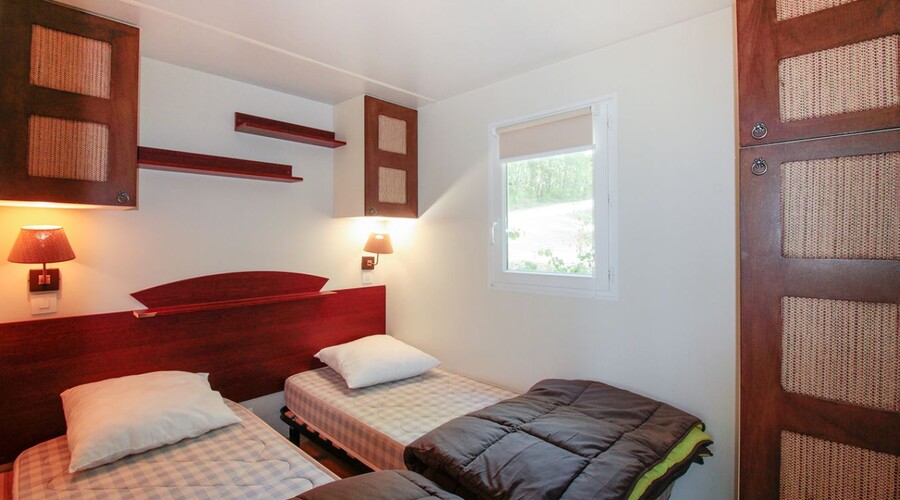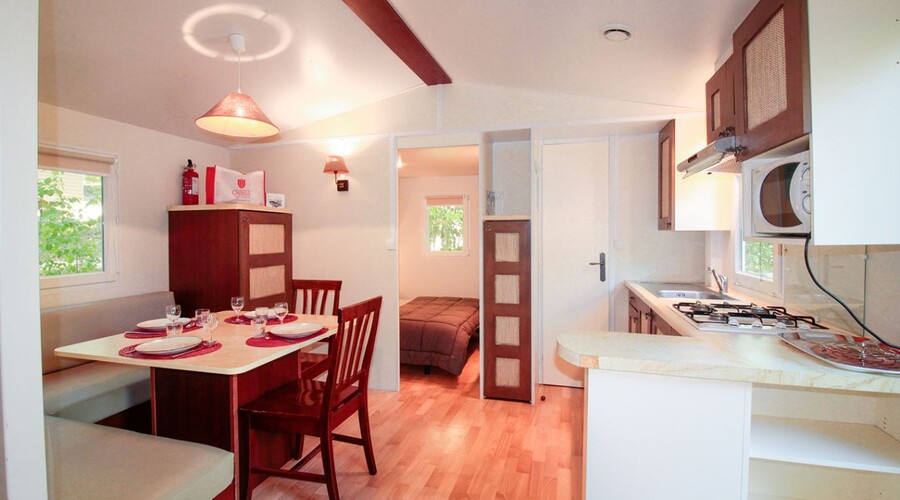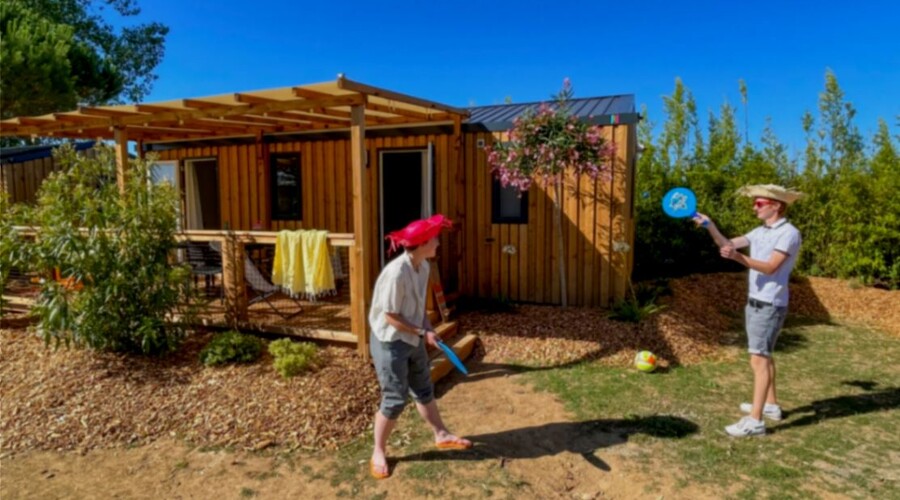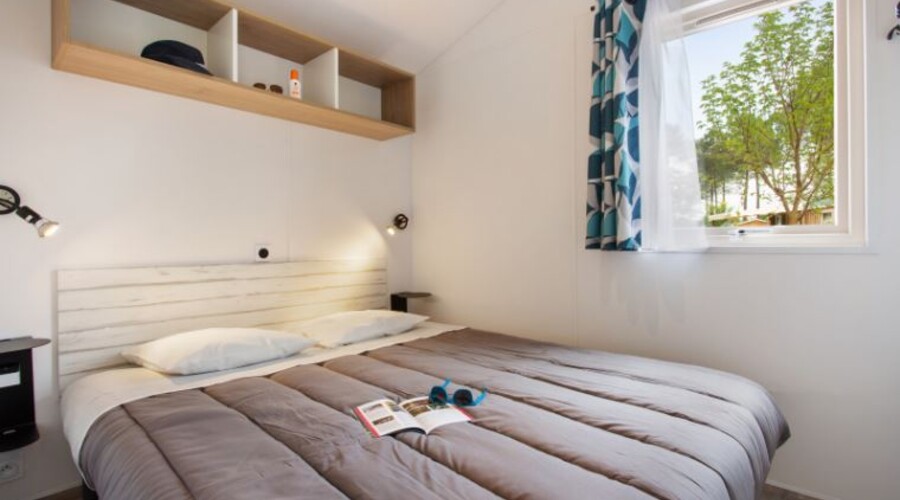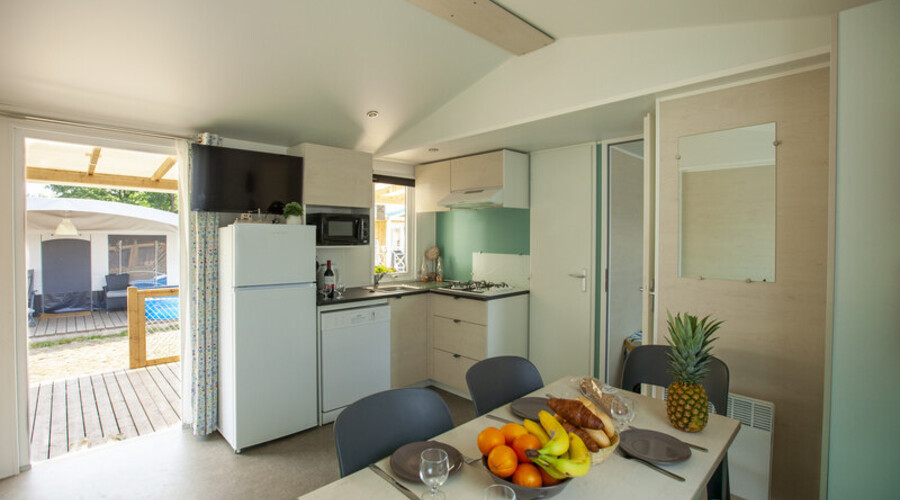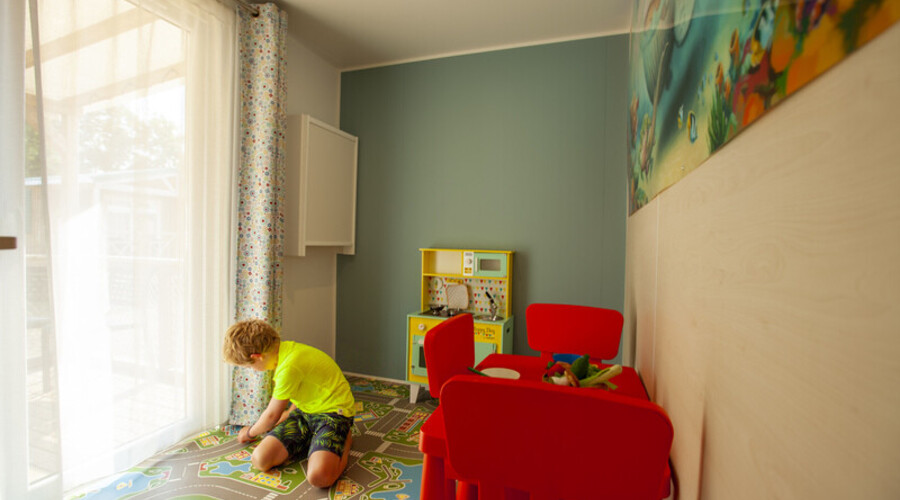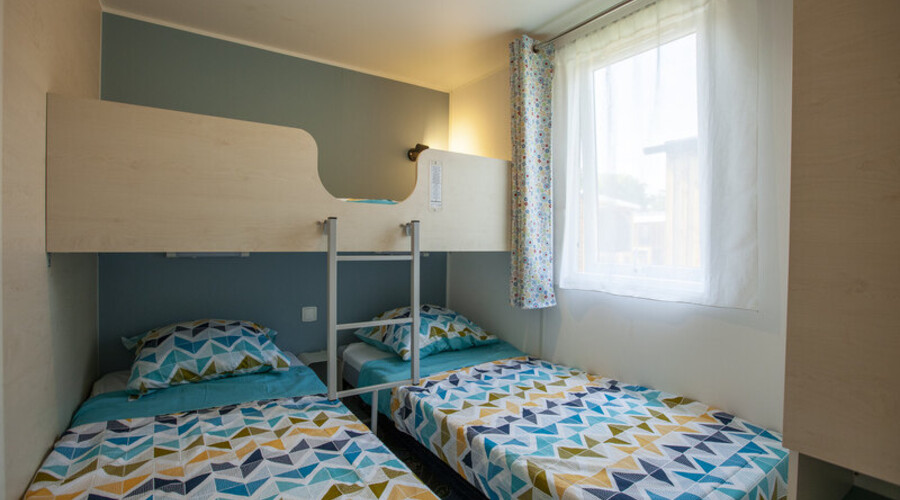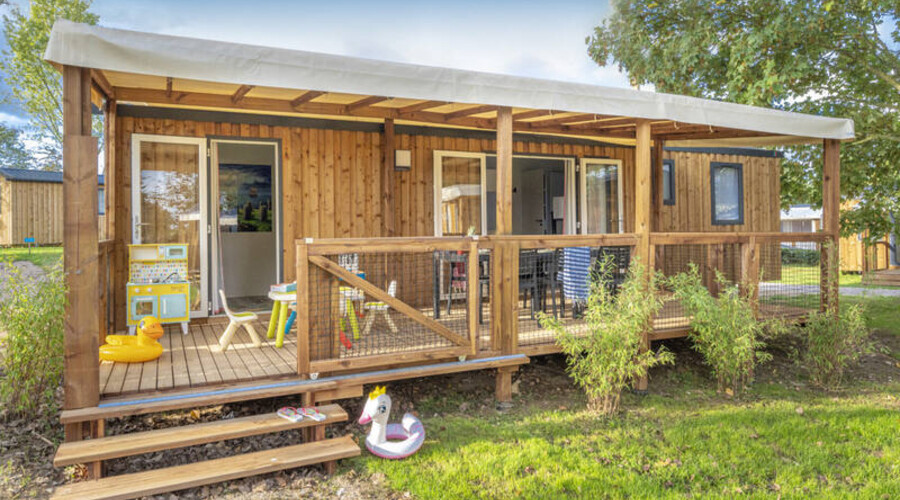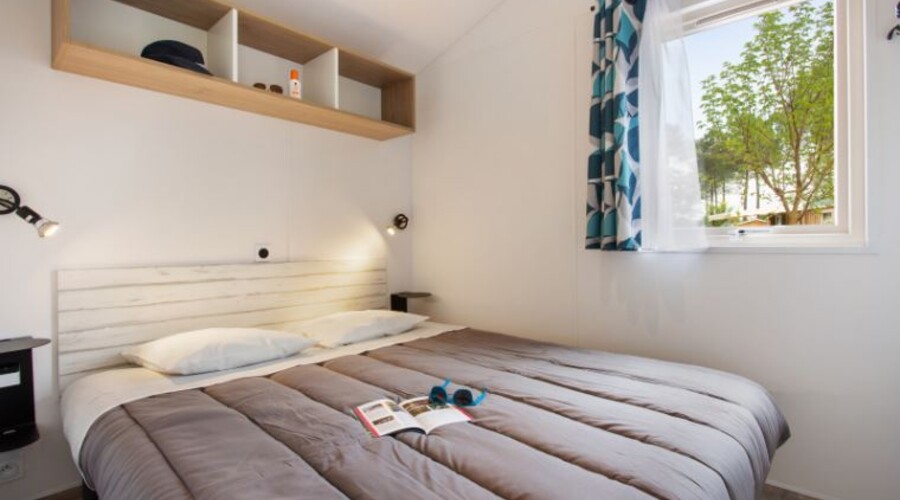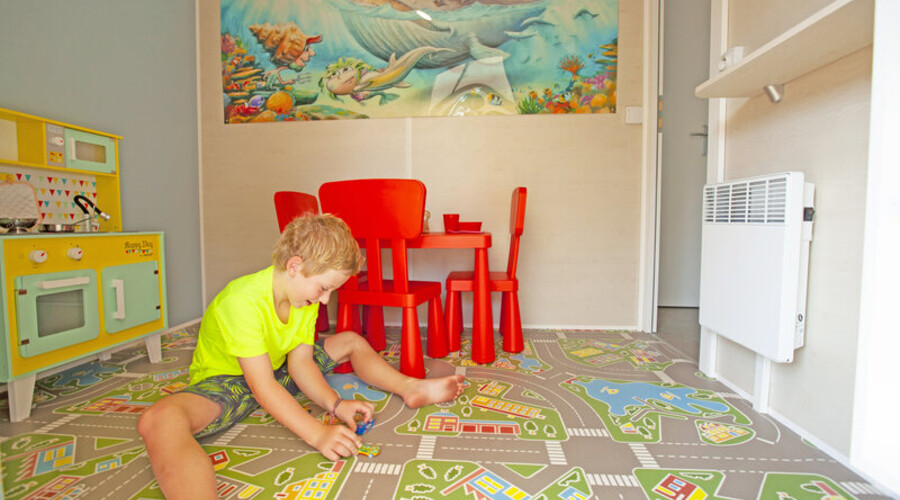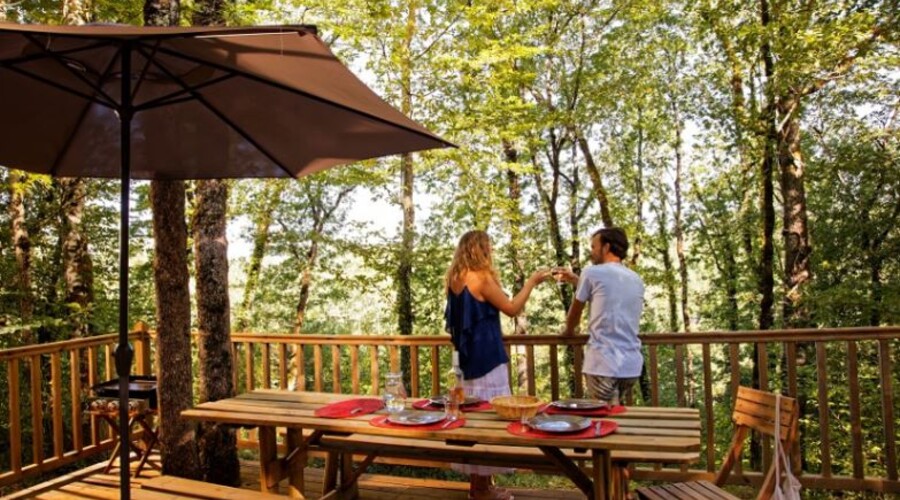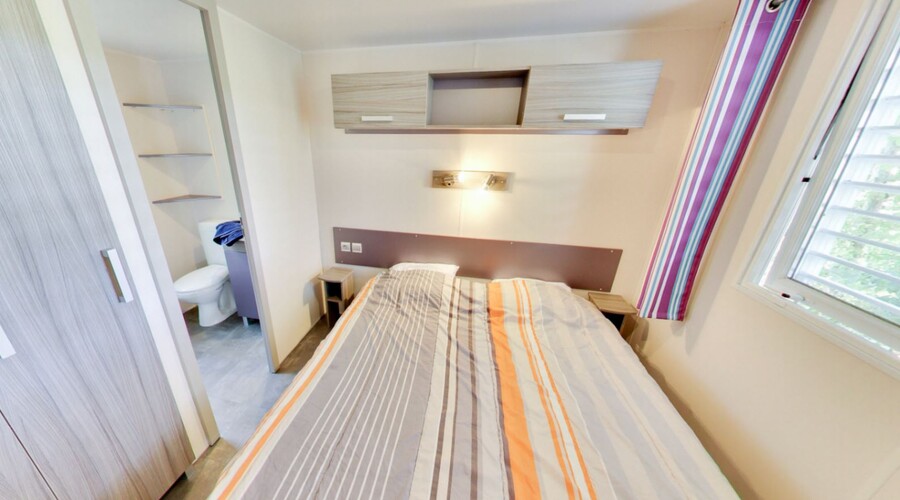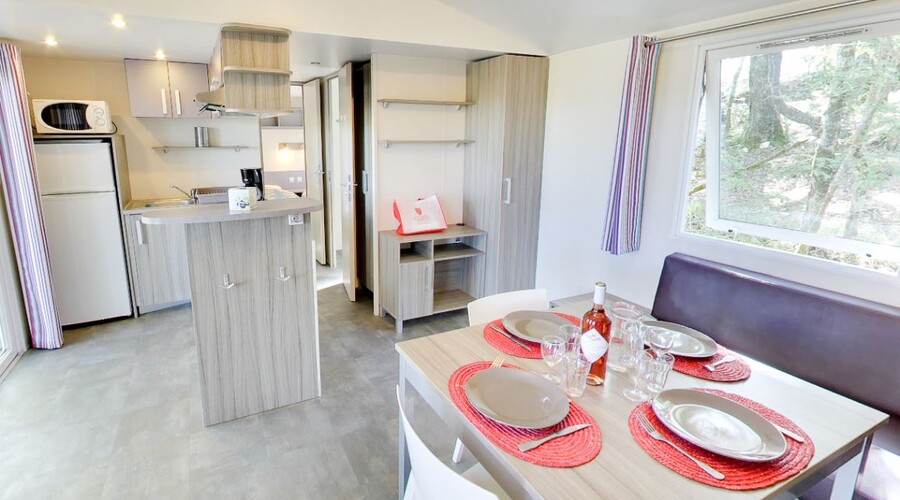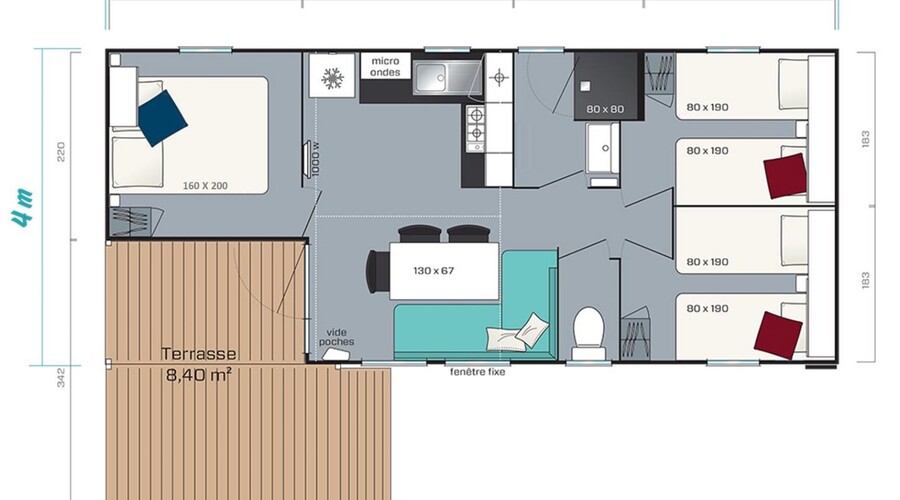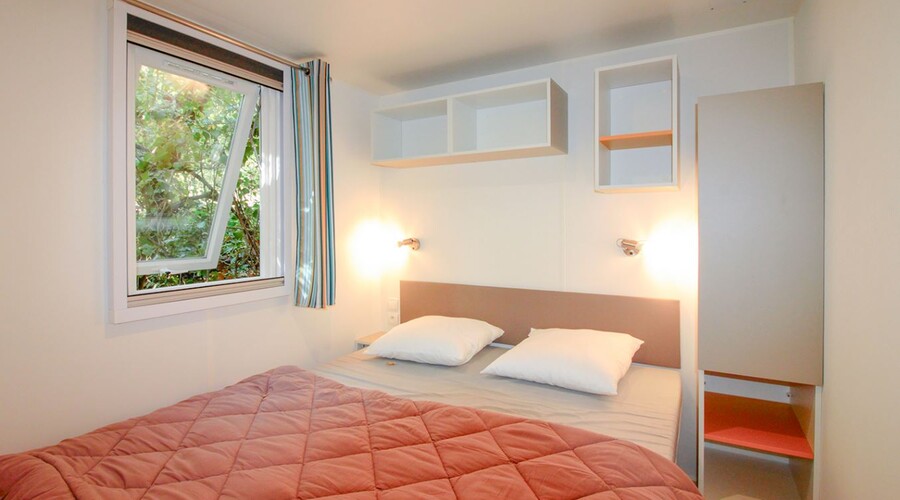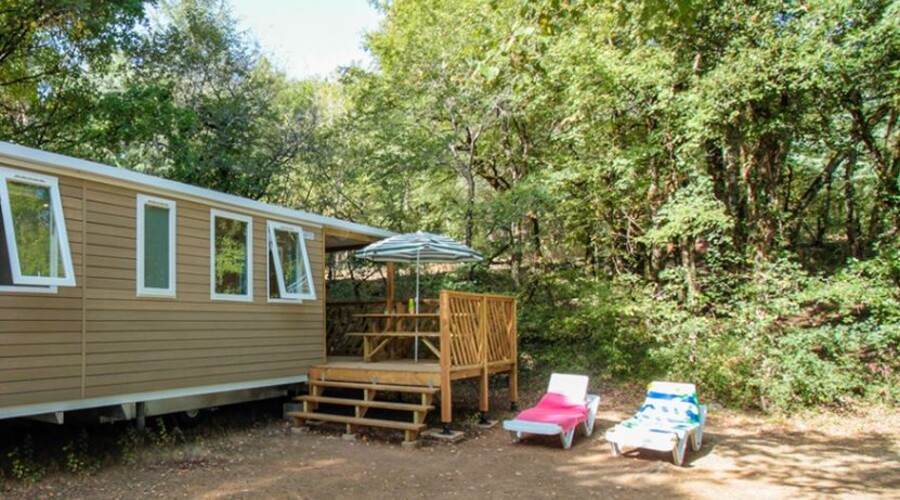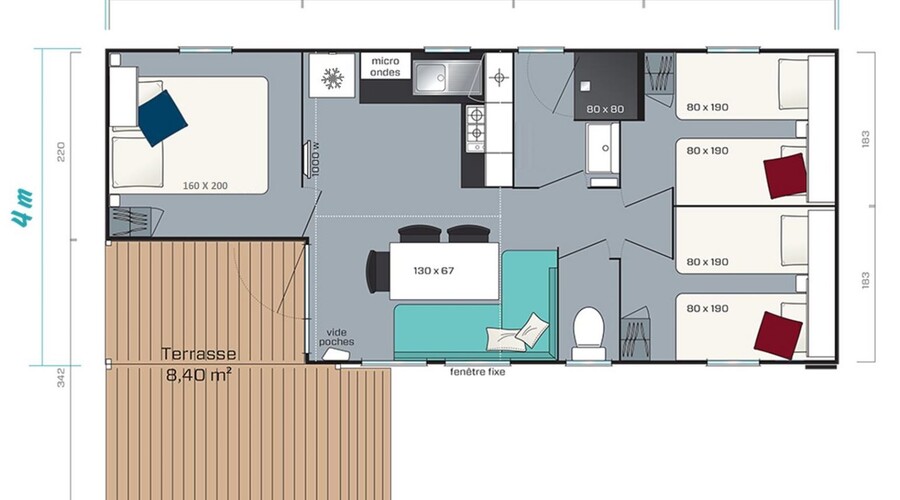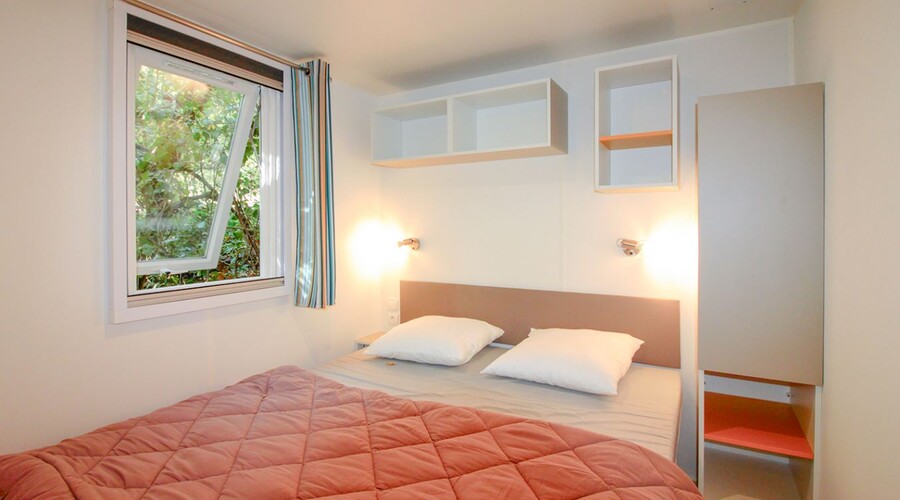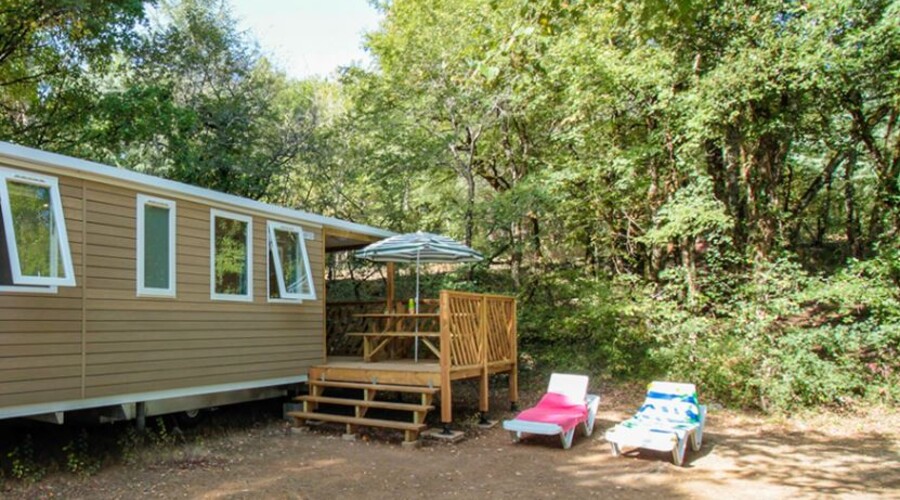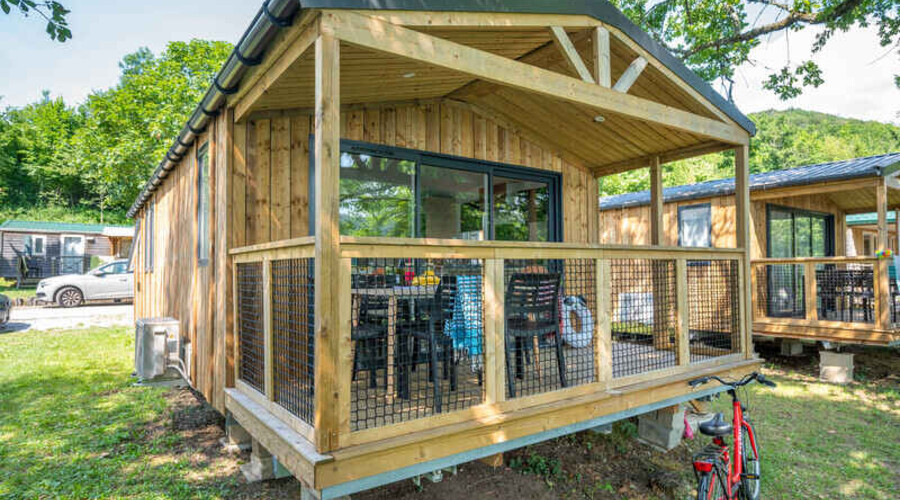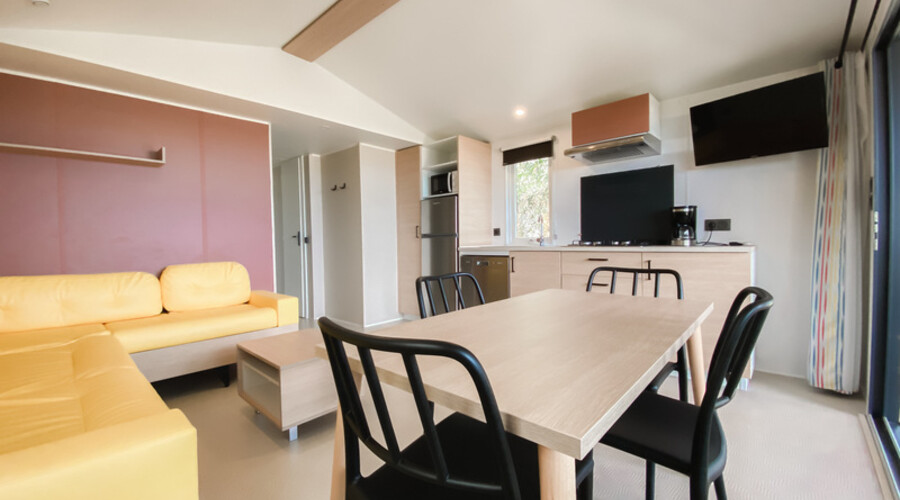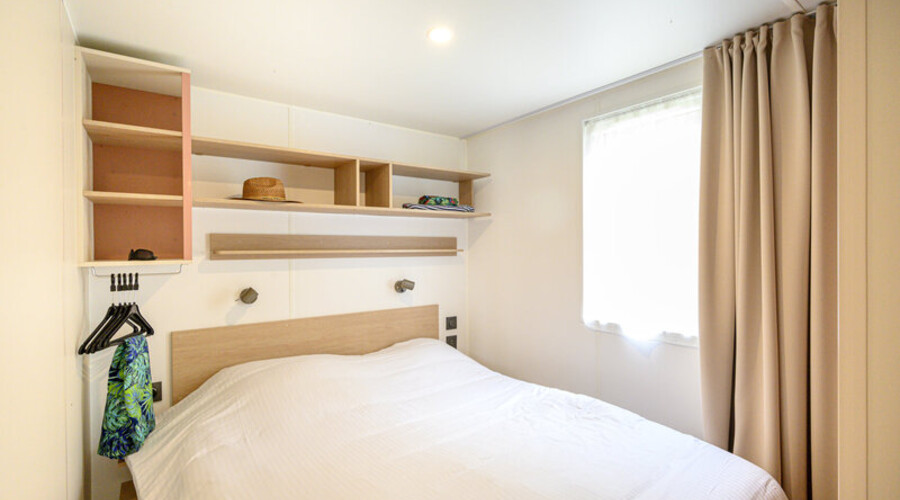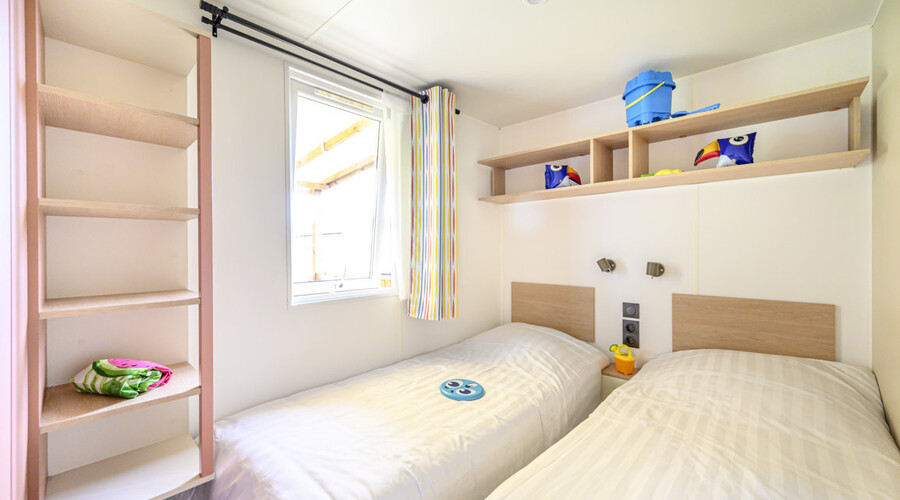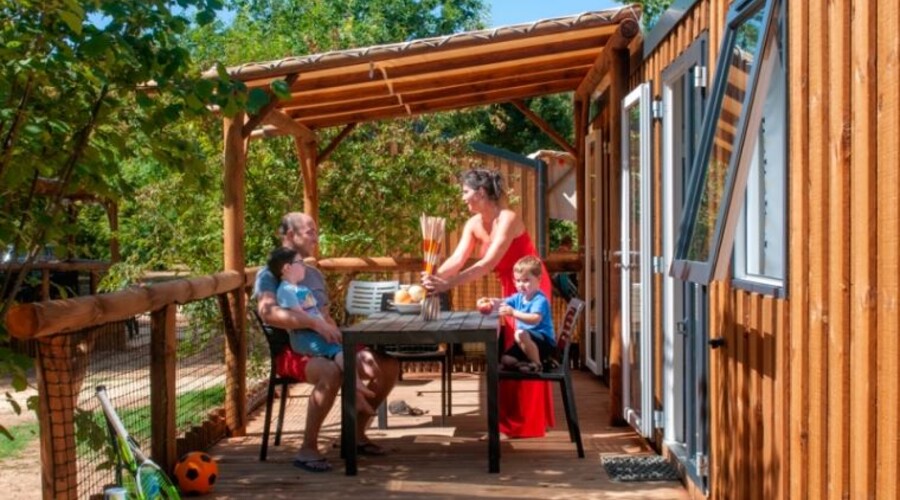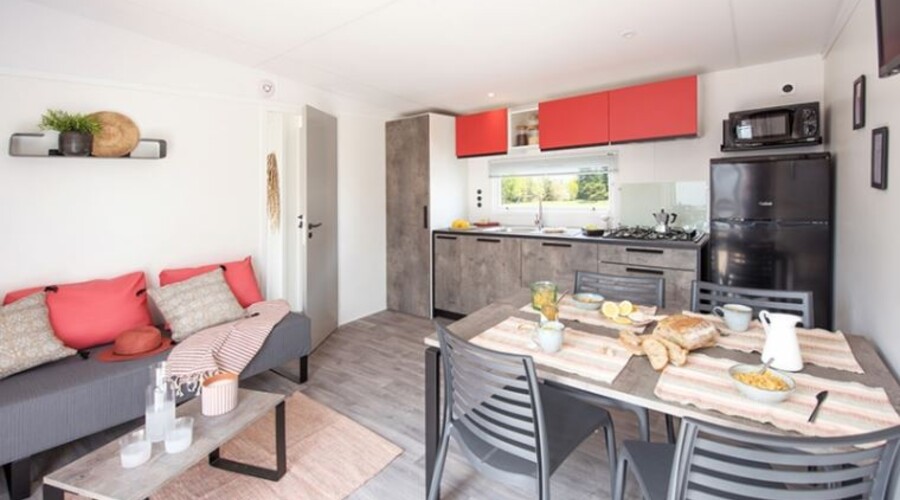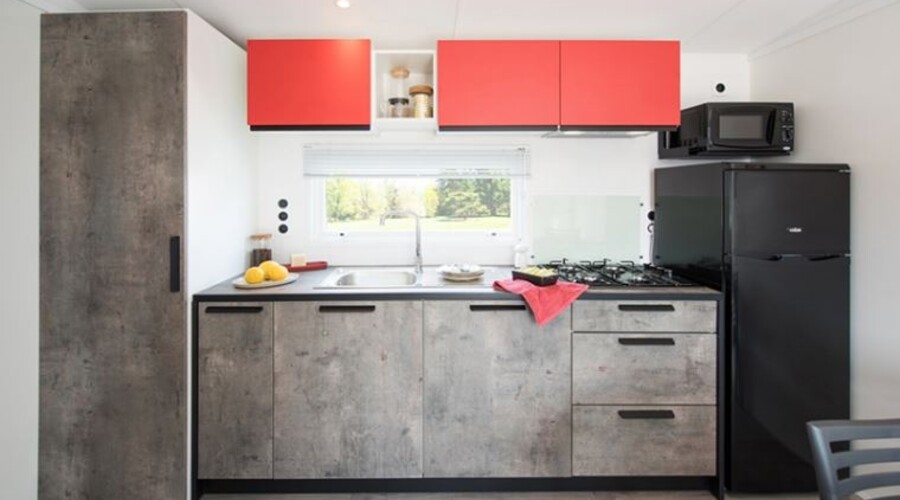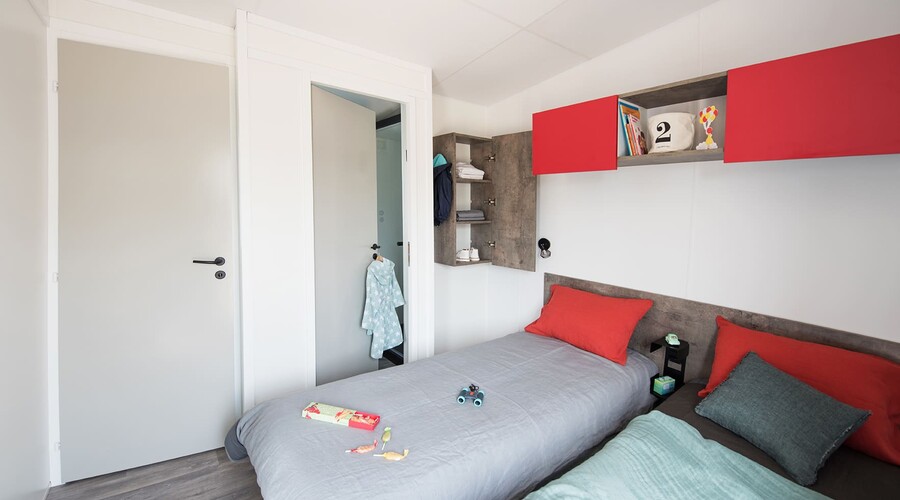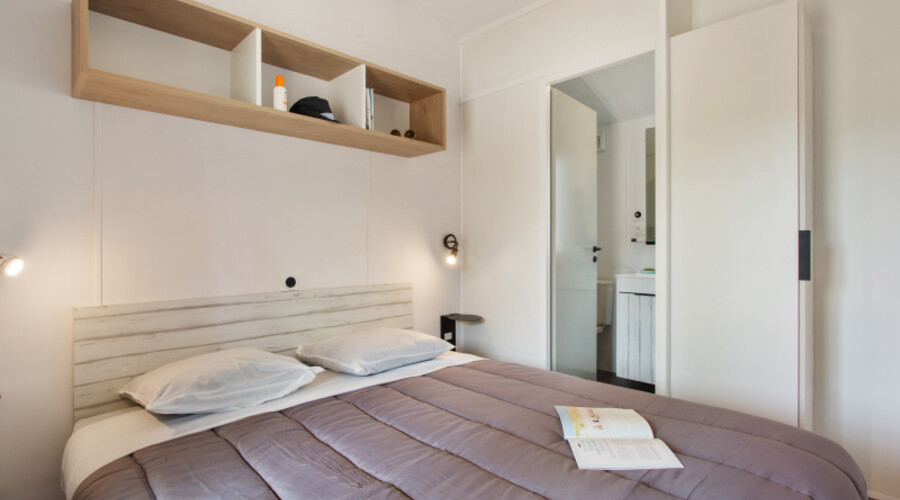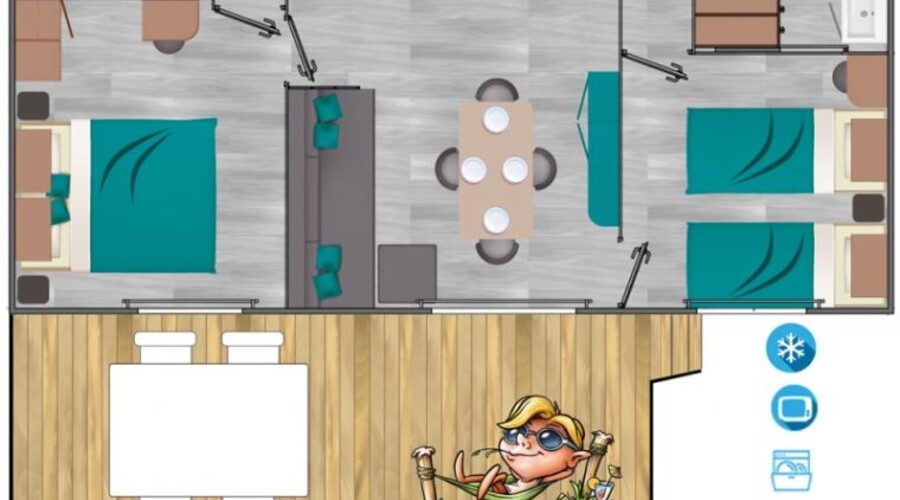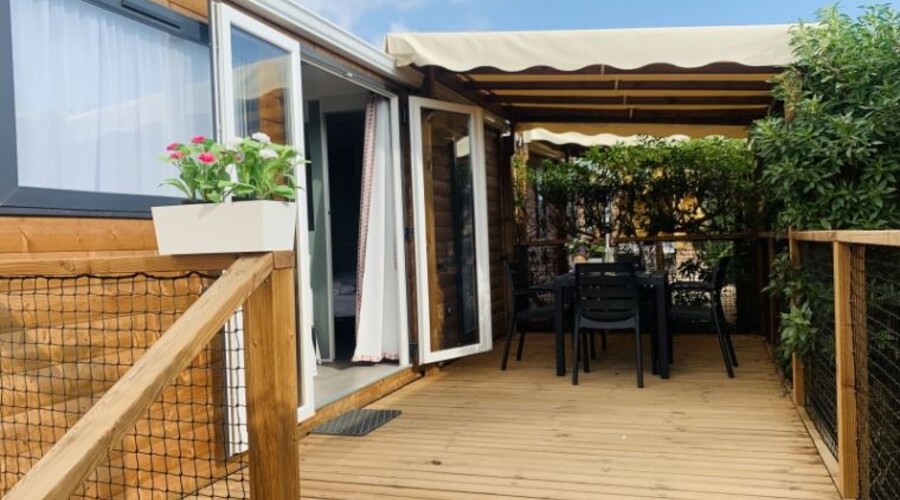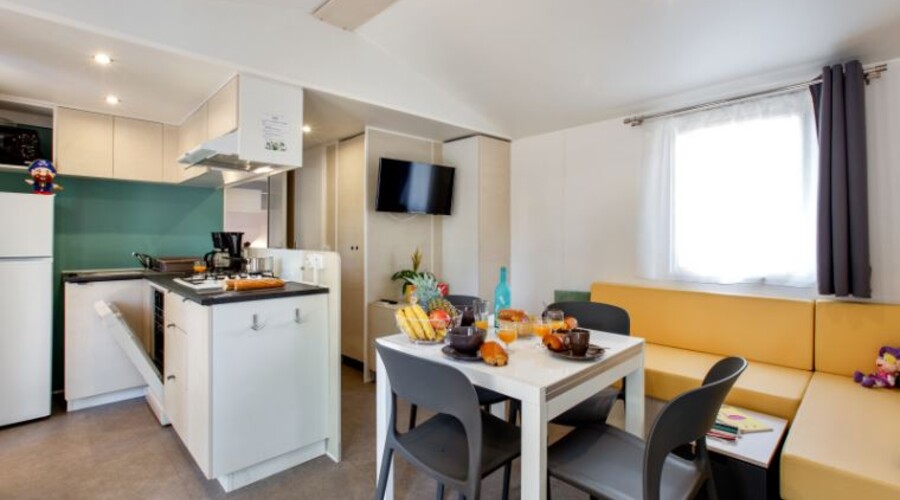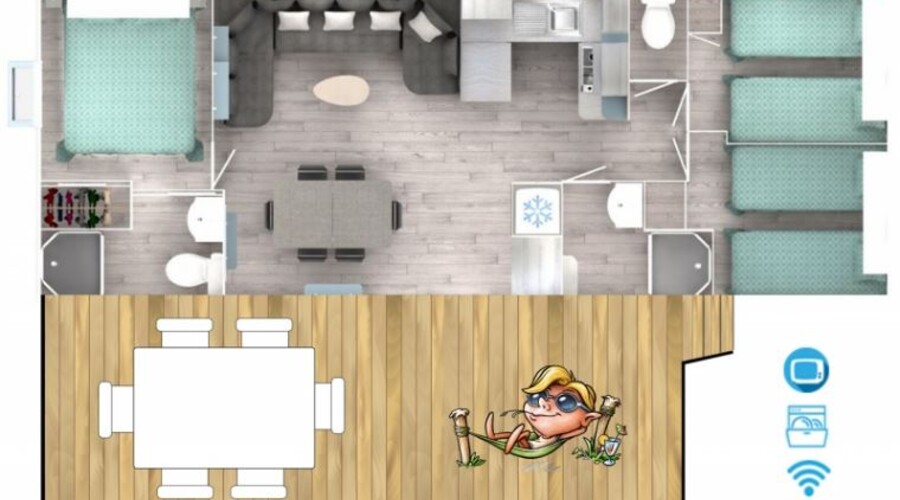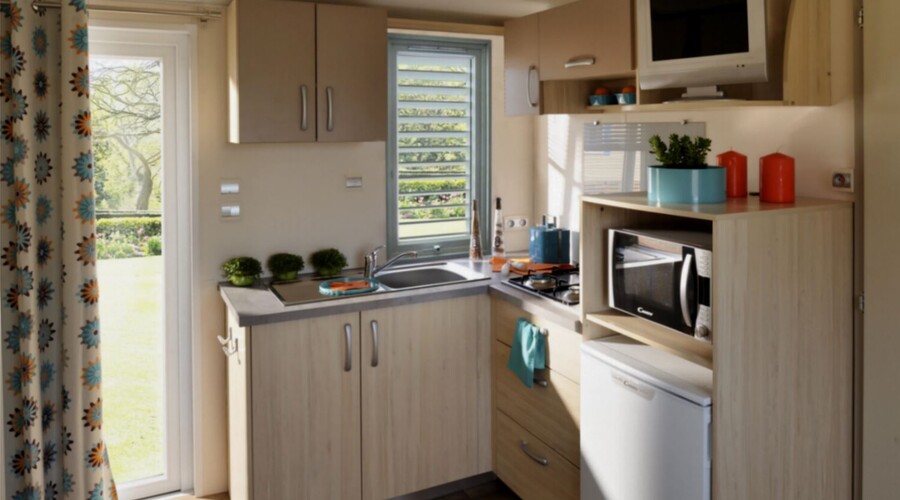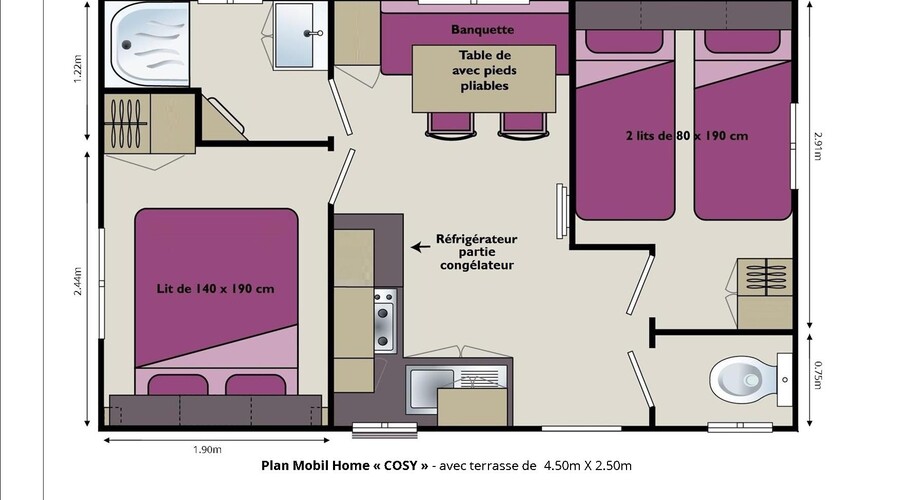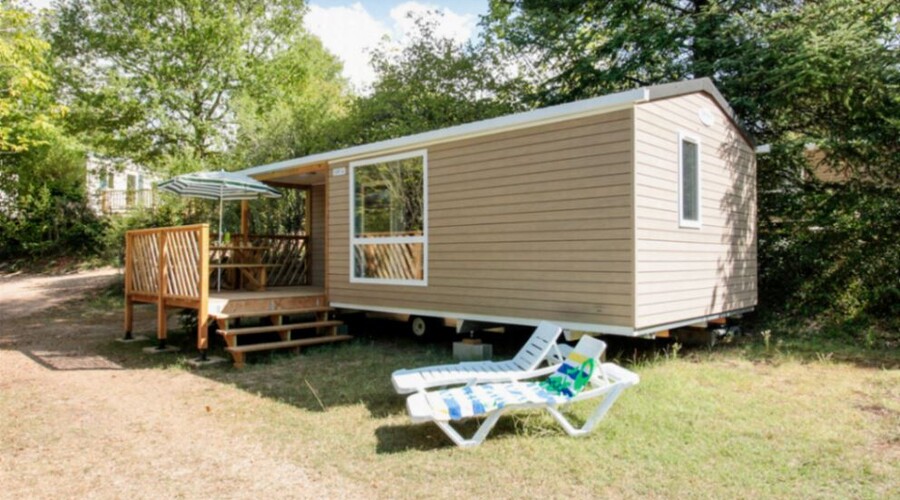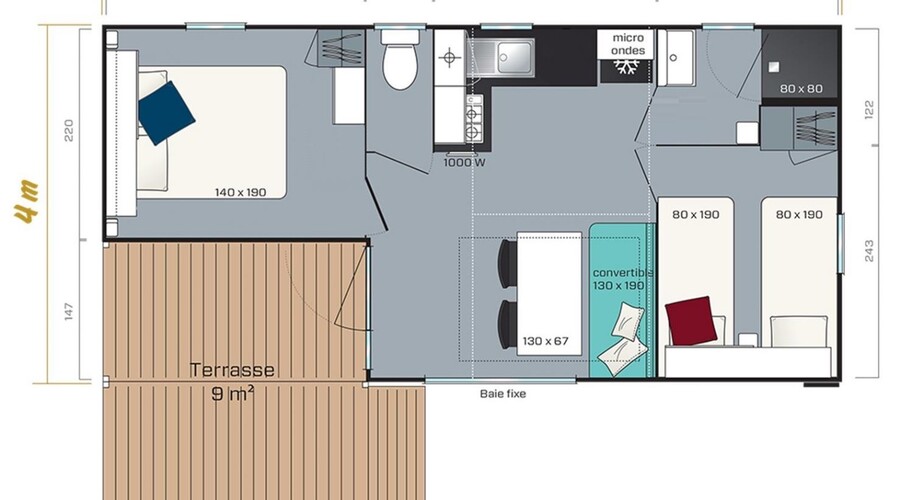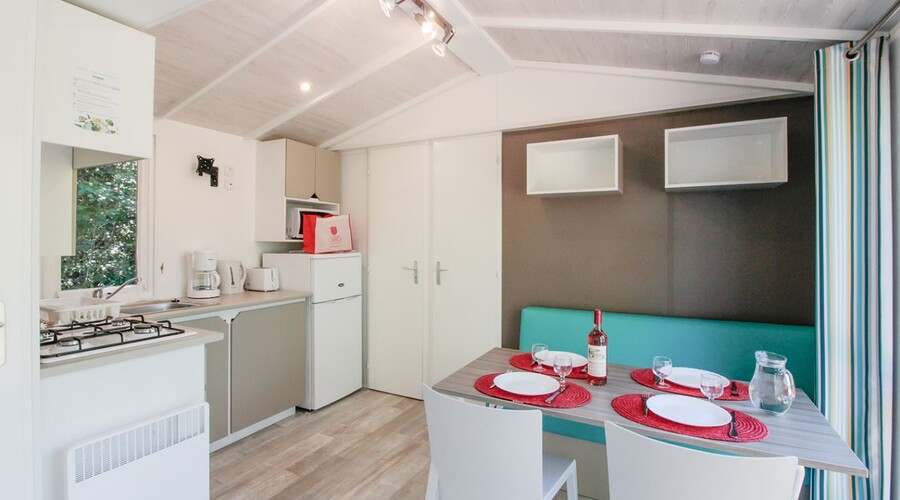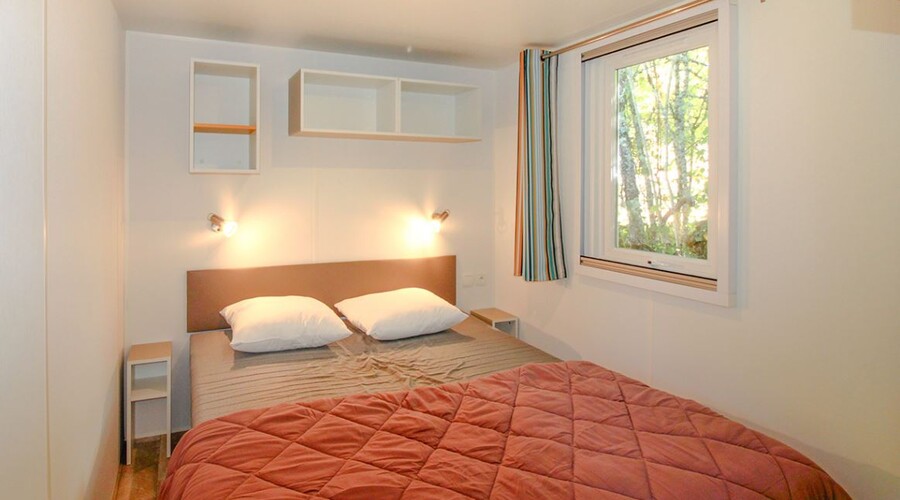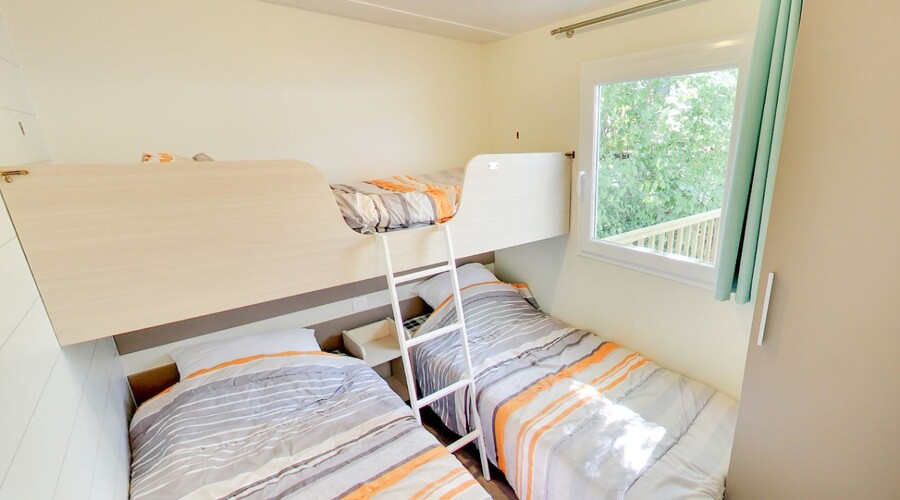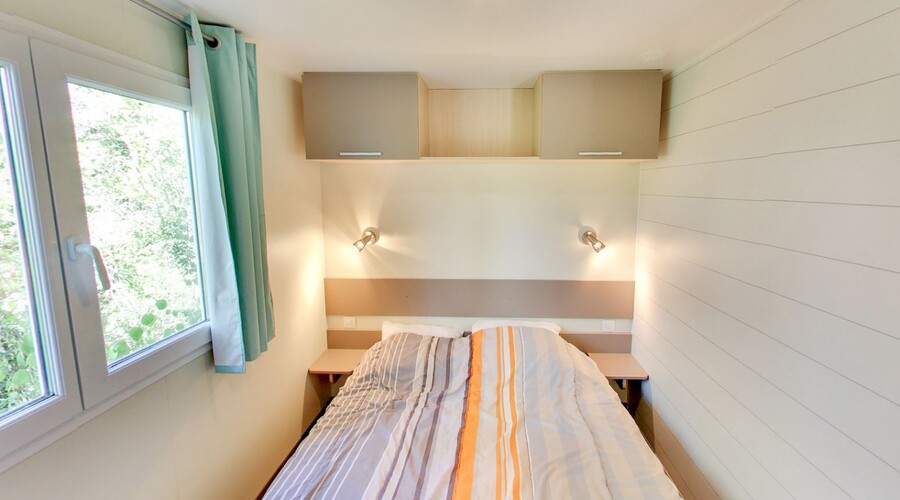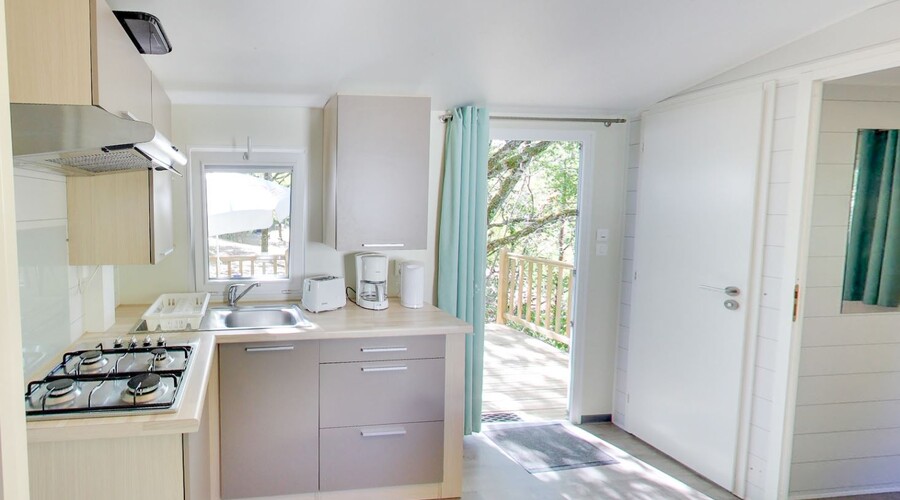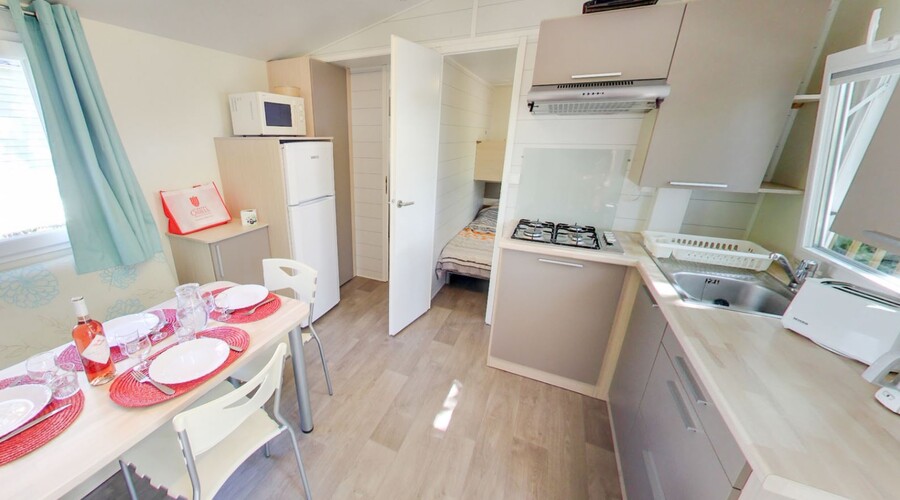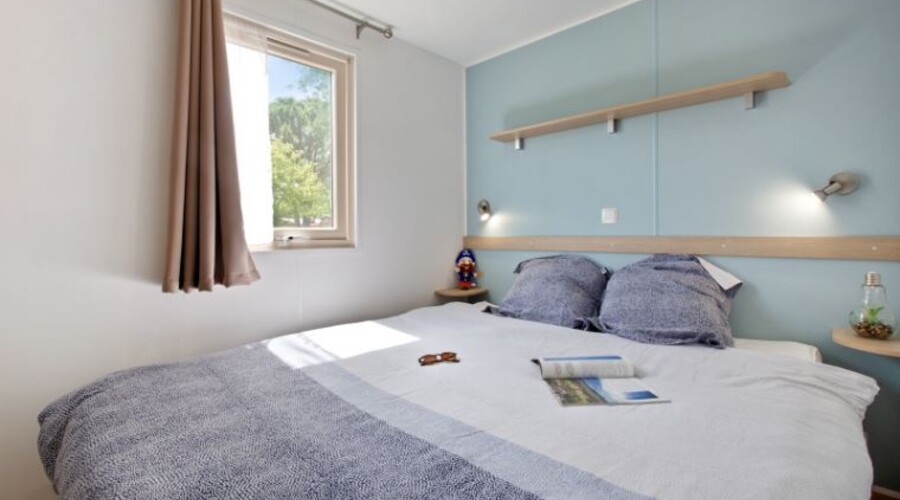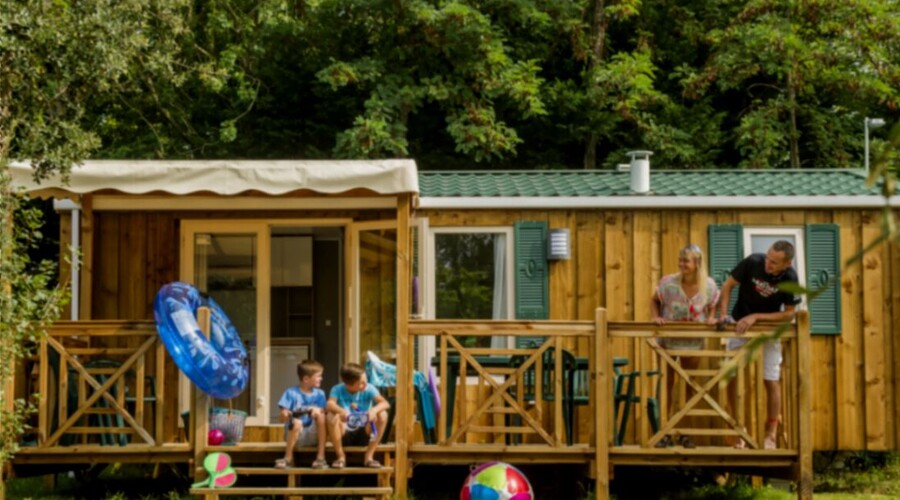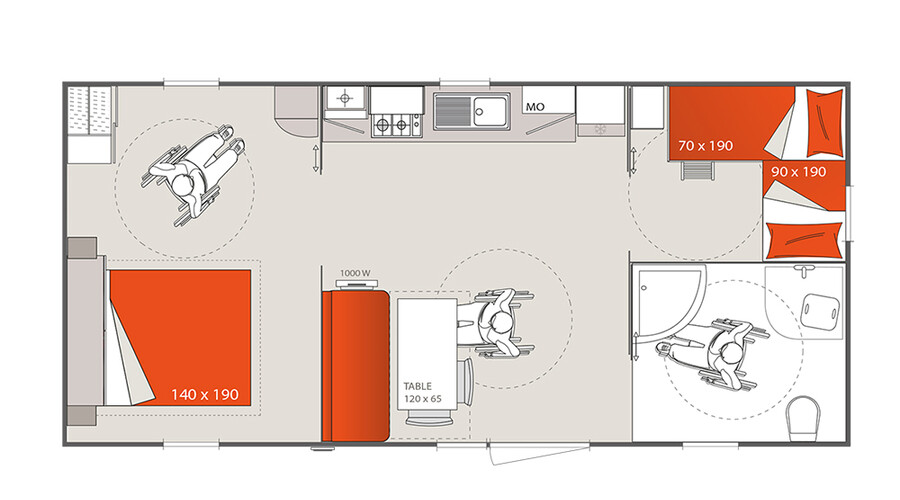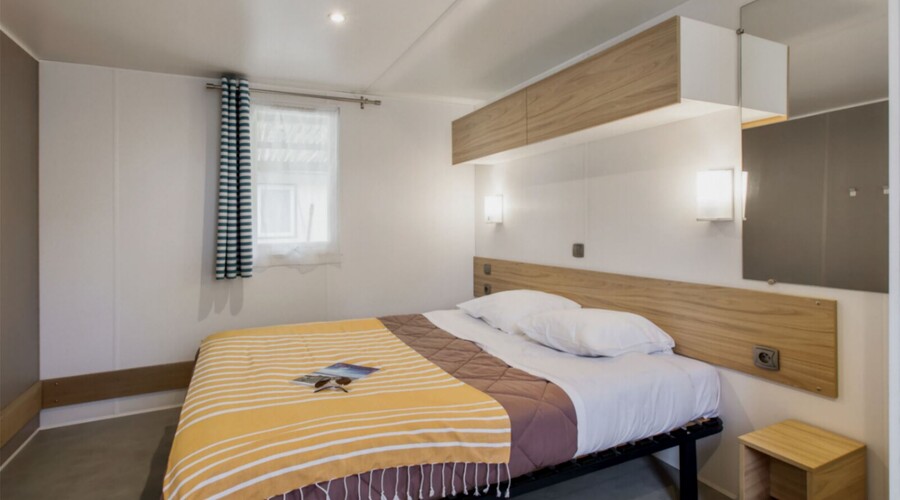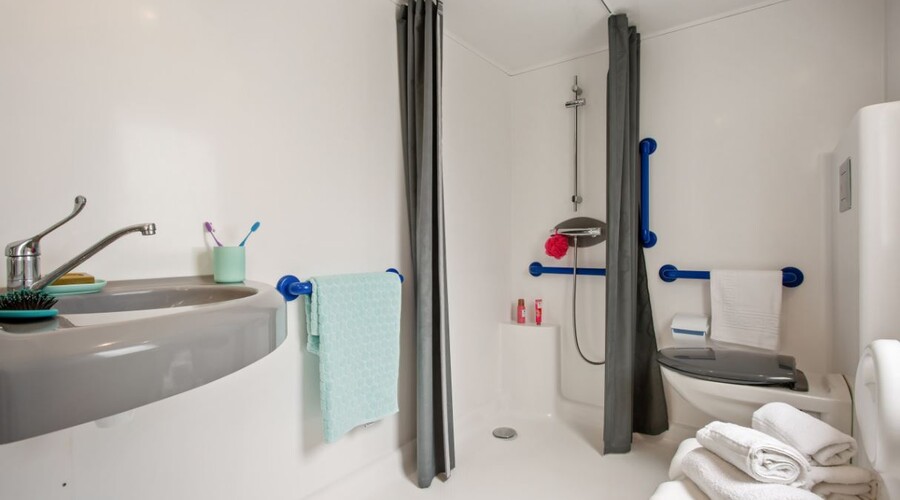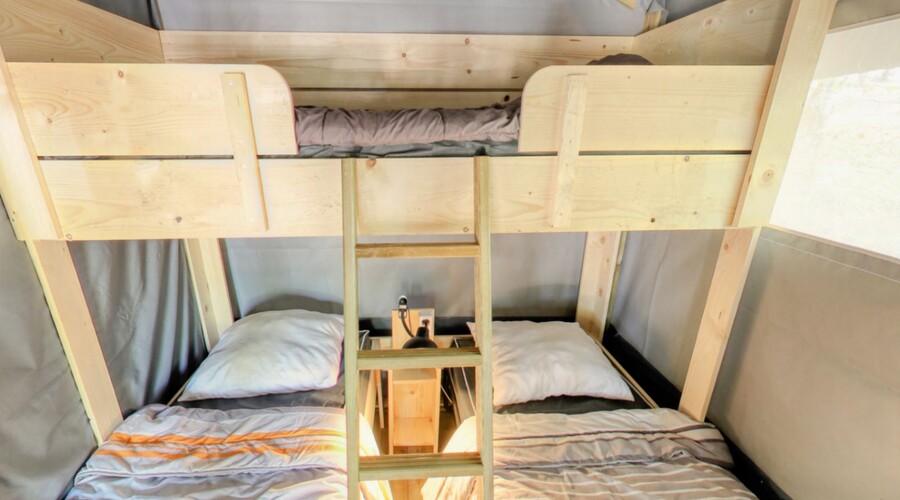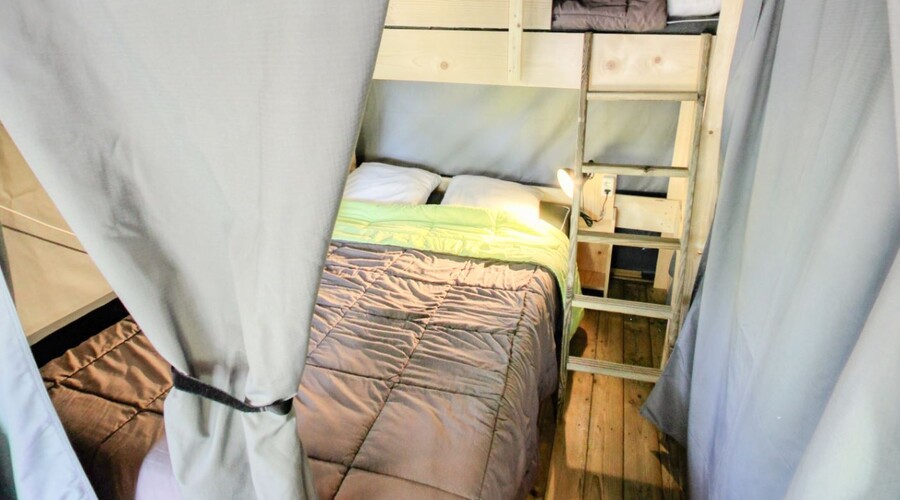
LA PAILLE BASSE ****
Perché à 250 m d’altitude sur une colline privée au cœur du Lot, le camping La Paille Basse offre un cadre paisible entouré de nature préservée. Idéalement situé, il permet de découvrir les sites incontournables de la région, tels que Rocamadour, le Gouffre de Padirac et la vallée de la Dordogne.
L'avis de nos vacanciers
sur 24 avis
8,7/10
Nos Hebergements
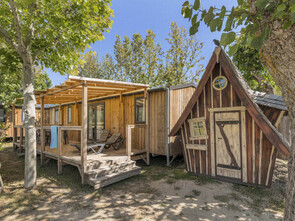
Amnésia Top Presta 8 pers
-
 8 PERS
8 PERS
-
 47 m²
47 m²
-
 4 CHAMBRES
4 CHAMBRES
Mobil-Home, 8 PERS, 4 CHAMBRES, 47m²
Nombre de personnes : 6
Nombre de chambres : 3
Terrasse couverte
- 2 Transats
- Salon de Jardin
Cuisine :
- Cafetière
- Lave-vaisselle
- Micro-ondes
- Plaques de cuisson
- Réfrigérateur
- Vaisselle & Ustensiles de cuisine
- Séjour
Chambres :
- 1 chambre avec lit double (140cm ou 160x200cm)
- 2 Chambres avec 2 lits simples
- Couvertures
- Oreillers
Salle d'eau :
- 2 Salles de douche avec WC
+ La cabane de Amnésia d'une surface 7m², se compose ainsi :
1 chambre avec 2 lits simples
Ne convient pas en couchages à des enfants de – 12 ans.
Radiateur dans chaque pièce
CLIMATISATION
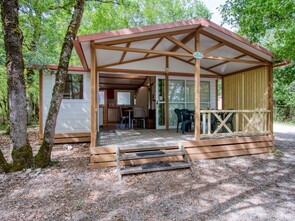
Chalet Confort LV 6 pers
-
 6 PERS
6 PERS
-
 47 m²
47 m²
-
 3 CHAMBRES
3 CHAMBRES
Mobil-Home, 6 PERS, 3 CHAMBRES, 47m²
Nombre de personnes : 6
Nombre de chambres : 3
Ancienneté : 0 à 10 ans
Terrasse semi-couverte
- Salon de Jardin
- Terrasse
Cuisine :
- Cafetière
- Lave-vaisselle
- Micro-ondes
- Plaques de cuisson
- Réfrigérateur
- Vaisselle & Ustensiles de cuisine
Chambres :
- 2 chambres avec 2 lits simples
- 1 chambre avec lit double (140x190cm)
- Couettes
- Oreillers
Salle d'eau :
- 1WC
- 1 salle de bain
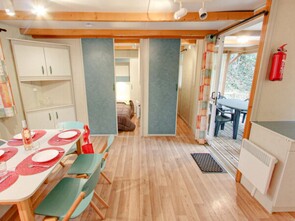
Chalet LV 6 pers
-
 6 PERS
6 PERS
-
 47 m²
47 m²
-
 3 CHAMBRES
3 CHAMBRES
Mobil-Home, 6 PERS, 3 CHAMBRES, 47m²
Nombre de personnes : 6
Nombre de chambres : 3
Ancienneté : + de 10 ans
Terrasse semi-couverte
- Salon de Jardin
- Terrasse
Cuisine :
- Cafetière
- Lave-vaisselle
- Micro-ondes
- Plaques de cuisson
- Réfrigérateur
- Vaisselle & Ustensiles de cuisine
Chambres :
- 2 chambres avec 2 lits simples
- 1 chambre avec lit double (140x190cm)
- Couettes
- Oreillers
Salle d'eau :
- 1WC
- 1 salle de bain
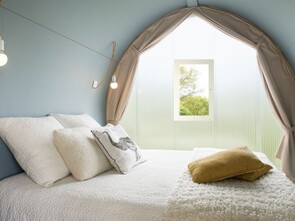
Coco Sweet 4 pers
-
 4 PERS
4 PERS
-
 16 m²
16 m²
-
 2 CHAMBRES
2 CHAMBRES
Tente meublée, 4 PERS, 2 CHAMBRES, 16m²
Nombre de personnes : 4
Nombre de chambres : 2
Ancienneté : 0 à 10 ans
Terrasse semi-couverte
- Salon de Jardin
- Terrasse
Cuisine :
- Cafetière
- Micro-ondes
- Plaques de cuisson
- Réfrigérateur
- Vaisselle & Ustensiles de cuisine
Chambres :
- 1 chambre avec 2 lits simples
- 1 chambre avec lit double (140x190cm)
- Couettes
- Oreillers

Habana Top Presta 4 pers
-
 4 PERS
4 PERS
-
 24 m²
24 m²
-
 2 CHAMBRES
2 CHAMBRES
Mobil-Home, 4 PERS, 2 CHAMBRES, 24m²
Nombre de chambres : 2
Surface : 25m²
Extérieur :
- Salon de Jardin
- Terrasse couverte
Cuisine :
- Cafetière électrique
- Lave-vaisselle
- Micro-ondes
- Plaques de cuisson
- Réfrigérateur - congélateur
- Vaisselle et ustensiles de cuisine
Séjour :
- Séjour avec table, chaises, banquette
Chambre :
- 2 Chambres : 1 avec lit double et 1 avec 2 lits simples
- Couvertures
- Oreillers
Salle d'eau :
- Douche
- Lavabo
- WC séparés
Services Inclus :
- Climatisation
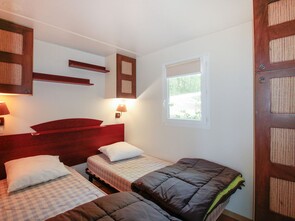
Mobil-home 6 pers
-
 6 PERS
6 PERS
-
 32 m²
32 m²
-
 3 CHAMBRES
3 CHAMBRES
Mobil-Home, 6 PERS, 3 CHAMBRES, 32m²
Nombre de personnes : 6
Nombre de chambres : 3
Ancienneté : 0 à 10 ans
Terrasse semi-couverte
- Salon de Jardin
- Terrasse
Cuisine :
- Cafetière
- Micro-ondes
- Plaques de cuisson
- Réfrigérateur
- Vaisselle & Ustensiles de cuisine
Chambres :
- 2 chambres avec 2 lits simples
- 1 chambre avec lit double (140x190cm)
- Couettes
- Oreillers
Salle d'eau :
- 1WC
- 1 salle de bain

Moussaillon Clim Lave-vaisselle 5pers
-
 5 PERS
5 PERS
-
 28 m²
28 m²
-
 2 CHAMBRES
2 CHAMBRES
Mobil-Home, 5 PERS, 2 CHAMBRES, 28m²
- Climatisation
- Lave-vaisselle
- Cafetière électrique
- Micro-ondes
- Plaques de cuisson
- Réfrigérateur - congélateur
- Séjour avec table, chaises, banquette
Kit bébé sur demande sans supplément (baignoire, chaise haute et lit parapluie)
Salle de jeux :
- Déco colorée
- Table à langer
Chambre :
- 1 chambre avec 3 couchages (1 lit simple en hauteur et 2 lits simples)
- 1 chambre avec lit double (160cm)
Salle de bain spacieuse :
- Douche
- Lavabo
- WC
Extérieur :
- Salon de Jardin
- Terrasse sécurisée semi couverte avec portillon de sécurité
(Prises sécurisées)
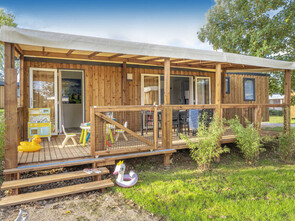
Moussaillon Clim Lave-vaisselle 7pers
-
 7 PERS
7 PERS
-
 40 m²
40 m²
-
 3 CHAMBRES
3 CHAMBRES
Mobil-Home, 7 PERS, 3 CHAMBRES, 40m²
- Climatisation
- Lave-vaisselle
- Cafetière électrique
- Micro-ondes
- Plaques de cuisson
- Réfrigérateur - Congélateur
- Vaisselle & Ustensiles de cuisine
Kit bébé sur demande sans supplément (baignoire, chaise haute et lit parapluie)
Salle de jeux :
- Déco colorée
- Table à langer
Chambre :
- 1 chambre avec lit double (160cm)
- 1 chambre : 3 lits simples dont 1 lit superposé et 1 lit gigogne
- 1 chambre avec 2 lits simples
Salle de bain :
- Douche
- Lavabo
- WC séparés
Extérieur :
- Salon de Jardin
- Terrasse sécurisée semi couverte avec portillon de sécurité
(Prises sécurisées)
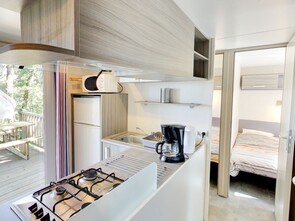
Resort + 6/8 pers
-
 8 PERS
8 PERS
-
 40 m²
40 m²
-
 3 CHAMBRES
3 CHAMBRES
Mobil-Home, 8 PERS, 3 CHAMBRES, 40m²
Nombre de personnes : 8
Nombre de chambres : 3
Ancienneté : 0 à 10 ans
Terrasse semi-couverte
- Salon de Jardin
- Terrasse
Cuisine :
- Cafetière
- Micro-ondes
- Plaques de cuisson
- Réfrigérateur
- Vaisselle & Ustensiles de cuisine
Chambres :
- 2 chambres avec 2 lits simples
- 1 chambre avec lit double (140x190cm)
- Couettes
- Oreillers
Salle d'eau :
- 1WC
- 1 salle de bain

Resort 6 pers
-
 6 PERS
6 PERS
-
 32 m²
32 m²
-
 3 CHAMBRES
3 CHAMBRES
Mobil-Home, 6 PERS, 3 CHAMBRES, 32m²
Nombre de personnes : 6
Nombre de chambres : 3
Ancienneté : 0 à 10 ans
- Salon de Jardin
- Terrasse
Cuisine :
- Cafetière
- Micro-ondes
- Plaques de cuisson
- Réfrigérateur
- Vaisselle & Ustensiles de cuisine
Chambres :
- 2 chambres avec 2 lits simples
- 1 chambre avec lit double (140x190cm)
- Couettes
- Oreillers
Salle d'eau :
- 1WC
- 1 salle de bain
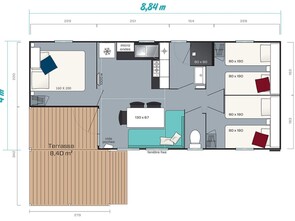
Resort 6/7 pers
-
 7 PERS
7 PERS
-
 28 m²
28 m²
-
 3 CHAMBRES
3 CHAMBRES
Mobil-Home, 7 PERS, 3 CHAMBRES, 28m²
Nombre de personnes : 7
Nombre de chambres : 3
Ancienneté : 0 à 10 ans
Terrasse semi-couverte
- Salon de Jardin
- Terrasse
Cuisine :
- Cafetière
- Micro-ondes
- Plaques de cuisson
- Réfrigérateur
- Vaisselle & Ustensiles de cuisine
Chambres :
- 2 chambres avec 2 lits simples
- 1 chambre avec lit double (140x190cm)
- Couettes
- Oreillers
Salle d'eau :
- 1WC
- 1 salle de bain

Resort Clim Lave-vaisselle 6/8 pers
-
 8 PERS
8 PERS
-
 32 m²
32 m²
-
 3 CHAMBRES
3 CHAMBRES
Mobil-Home, 8 PERS, 3 CHAMBRES, 32m²
Nombre de personnes : 6/8
Nombre de chambres : 3
Surface : 29m²
Extérieur :
- Salon de Jardin
- Terrasse semi couverte
Cuisine :
- Cafetière électrique
- Lave-vaisselle
- Micro-ondes
- Plaques de cuisson
- Réfrigérateur - congélateur
Séjour :
- Séjour avec table, chaises, banquette
- banquette convertible (2 couchages pour enfants -12 ans)
Chambre :
- 3 Chambres: 1 avec lit double, 2 avec 2 lits simples
- Couvertures
- Oreillers
Salle d'eau:
- Douche
- Lavabo
- WC séparés
Services Inclus :
- Climatisation
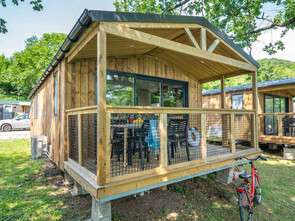
ResortBay Clim Lave-vaisselle 6 pers
-
 6 PERS
6 PERS
-
 36 m²
36 m²
-
 3 CHAMBRES
3 CHAMBRES
Mobil-Home, 6 PERS, 3 CHAMBRES, 36m²
- Climatisation
- Lave-vaisselle
- Cafetière électrique
- Micro-ondes
- Plaques de cuisson
- Réfrigérateur/congélateur
- Vaisselle et ustensiles de cuisine
- Séjour avec table, chaises, banquette
Chambre :
- 1 chambre avec lit double 160cm
- 1 chambre avec 2 lits simples
- 1 chambre avec lit superposé (reservé aux enfants jusqu'à 12ans)
Salle d'eau :
- Douche
- Lavabo
- WC séparés
Extérieur :
- Salon de Jardin
- Terrasse couverte
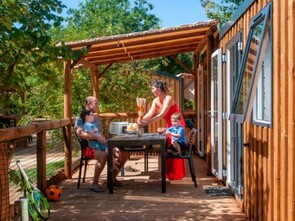
Rio Clim Lave-vaisselle 4 pers
-
 4 PERS
4 PERS
-
 36 m²
36 m²
-
 2 CHAMBRES
2 CHAMBRES
Mobil-Home, 4 PERS, 2 CHAMBRES, 36m²
Nombre de personnes : 4
Nombre de chambres : 2
Ancienneté : 0 à 10 ans
Terrasse semi-couverte
- 2 Transats
- Salon de Jardin
- Terrasse
Cuisine :
- Cafetière
- Lave-vaisselle
- Micro-ondes
- Plaques de cuisson
- Réfrigérateur
- Vaisselle & Ustensiles de cuisine
Chambres :
- 1 chambre avec 2 lits simples et sa salle de douche
- 1 chambre avec lit double (160x200cm) et sa salle de douche et wc privatifs
- Couettes
- Oreillers
Salle d'eau :
- 2 WC
- 2 salles de bain
Climatisation
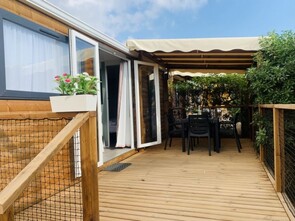
Rio Clim Lave-vaisselle 6 pers
-
 6 PERS
6 PERS
-
 40 m²
40 m²
-
 3 CHAMBRES
3 CHAMBRES
Mobil-Home, 6 PERS, 3 CHAMBRES, 40m²
Nombre de personnes : 6
Nombre de chambres : 3
Terrasse couverte
- 2 Transats
- Salon de Jardin
Cuisine :
- Cafetière
- Lave-vaisselle
- Micro-ondes
- Plaques de cuisson
- Réfrigérateur
- Vaisselle & Ustensiles de cuisine
- Séjour
Chambres :
- 1 chambre avec lit double (160x200cm)
- 2 Chambres avec 2 lits simples
- Couvertures
- Oreillers
Salle d'eau :
- 2 Salles de douche avec WC
Radiateur dans chaque pièce
Climatisation
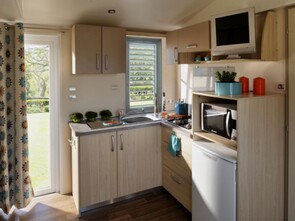
Sun 4 pers
-
 4 PERS
4 PERS
-
 22 m²
22 m²
-
 2 CHAMBRES
2 CHAMBRES
Mobil-Home, 4 PERS, 2 CHAMBRES, 22m²
Nombre de personnes : 4
Nombre de chambres : 2
Ancienneté : 0 à 10 ans
Terrasse semi-couverte
- Salon de Jardin
- Terrasse
Cuisine :
- Cafetière
- Micro-ondes
- Plaques de cuisson
- Réfrigérateur
- Vaisselle & Ustensiles de cuisine
Chambres :
- 1 chambre avec 2 lits simples
- 1 chambre avec lit double (140x190cm)
- Couettes
- Oreillers
Salle d'eau :
- 1WC
- 1 salle de bain
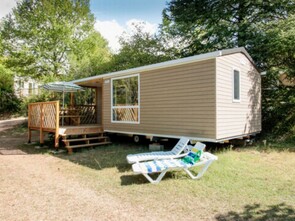
Sun 4/6 pers
-
 6 PERS
6 PERS
-
 24 m²
24 m²
-
 2 CHAMBRES
2 CHAMBRES
Mobil-Home, 6 PERS, 2 CHAMBRES, 24m²
Nombre de personnes : 4/6
Nombre de chambres : 2
Ancienneté : 0 à 10 ans
Terrasse semi-couverte
- Salon de Jardin
- Terrasse
Cuisine :
- Cafetière
- Micro-ondes
- Plaques de cuisson
- Réfrigérateur
- Vaisselle & Ustensiles de cuisine
Chambres :
- 1 chambres avec 2 lits simples
- 1 chambre avec lit double (140x190cm)
- Couettes
- Oreillers
Salle d'eau :
- 1WC
- 1 salle de bain
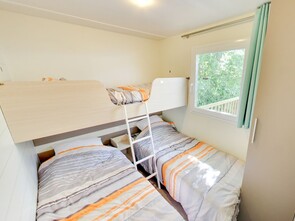
Sun 5 pers
-
 5 PERS
5 PERS
-
 27 m²
27 m²
-
 2 CHAMBRES
2 CHAMBRES
Mobil-Home, 5 PERS, 2 CHAMBRES, 27m²
Nombre de personnes : 5
Nombre de chambres : 2
Ancienneté : 0 à 10 ans
- Salon de Jardin
- Terrasse
Cuisine :
- Cafetière
- Micro-ondes
- Plaques de cuisson
- Réfrigérateur
- Vaisselle & Ustensiles de cuisine
Chambres :
- 1 chambre avec 2 lits simples
- 1 chambre avec lit double (140x190cm)
- Couettes
- Oreillers
Salle d'eau :
- 1WC
- 1 salle de bain
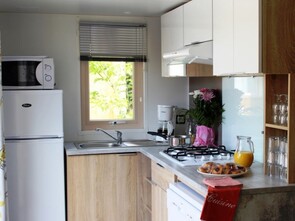
Sun Clim Lave-vaisselle 4/6 pers
-
 6 PERS
6 PERS
-
 27 m²
27 m²
-
 2 CHAMBRES
2 CHAMBRES
Mobil-Home, 6 PERS, 2 CHAMBRES, 27m²
Nombre de chambres : 2
Surface : 27m²
Extérieur :
- Salon de Jardin
- Terrasse semi couverte
Cuisine :
- Cafetière électrique
- Lave-vaisselle
- Micro-ondes
- Plaques de cuisson
- Réfrigérateur - congélateur
Séjour :
- Séjour avec table, chaises, banquette
- banquette convertible (2 couchages pour enfants -12 ans)
Chambre :
- 2 Chambres: 1 avec lit double, 1 avec 2 lits simples
- Couvertures
- Oreillers
Salle d'eau:
- Douche
- Lavabo
- WC séparés
Services Inclus :
- Climatisation
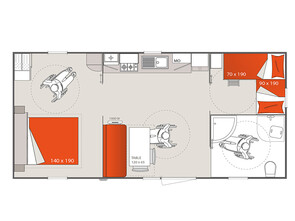
Sun Life + 4 pers
-
 4 PERS
4 PERS
-
 32 m²
32 m²
-
 2 CHAMBRES
2 CHAMBRES
Mobil-Home, 4 PERS, 2 CHAMBRES, 32m²
Nombre de personnes : 4
Nombre de chambres : 2
Ancienneté : 0 à 10 ans
Terrasse semi-couverte
- Salon de Jardin
- Terrasse
Cuisine :
- Cafetière
- Micro-ondes
- Plaques de cuisson
- Réfrigérateur
- Vaisselle & Ustensiles de cuisine
Chambres :
- 1 chambres avec 2 lits simples
- 1 chambre avec lit double (140x190cm)
- Couettes
- Oreillers
Salle d'eau :
- 1WC
- 1 salle de bain

Tente Glamping 4 pers ss sanitaire VV
-
 4 PERS
4 PERS
-
 40 m²
40 m²
Glamping, 4 PERS, 40m²
Nombre de personnes : 4
Nombre de chambres : 2
Ancienneté : 0 à 10 ans
Terrasse semi-couverte
- Salon de Jardin
- Terrasse
Cuisine :
- Cafetière
- Micro-ondes
- Plaques de cuisson
- Réfrigérateur
- Vaisselle & Ustensiles de cuisine
Chambres :
- 1 chambres avec 2 lits simples
- 1 chambre avec lit double (140x190cm)
- Couettes
- Oreillers
Salle d'eau :
- 1WC
- 1 salle de bain
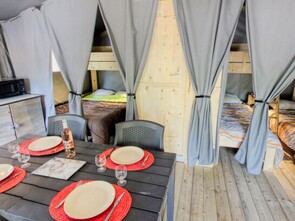
Tente Sahari 5 pers
-
 5 PERS
5 PERS
-
 39 m²
39 m²
-
 2 CHAMBRES
2 CHAMBRES
Tente meublée, 5 PERS, 2 CHAMBRES, 39m²
Nombre de personnes : 5
Nombre de chambres : 2
Ancienneté : 0 à 10 ans
Terrasse semi-couverte
- Salon de Jardin
- Terrasse
Cuisine :
- Cafetière
- Micro-ondes
- Plaques de cuisson
- Réfrigérateur
- Vaisselle & Ustensiles de cuisine
Chambres :
- 1 chambres avec 3 lits simples
- 1 chambre avec lit double (140x190cm)
- Couettes
- Oreillers
Salle d'eau :
- 1WC
- 1 salle de bain
Nos Espaces Aquatiques
L'espace aquatique du camping la Paille Basse comprend deux bassins extérieurs dont un chauffé, une pataugeoire chauffée pour vos bambins ainsi qu'un toboggan multipiste. Pour ceux souhaitant peaufiner leur bronzage, vous pourrez profiter du solarium.
-
 Pataugeoire extérieure chauffée
Pataugeoire extérieure chauffée
-
 Toboggan multipistes
Toboggan multipistes
-
 Piscine extérieure chauffée
Piscine extérieure chauffée
-
 Piscine extérieure
Piscine extérieure
-
 Solarium
Solarium
Nos Services

Sur place, le camping vous propose un restaurant, un snack/bar avec plats à emporter, une laverie... pour un séjour tout confort.
-
 Bar/snack €
Bar/snack €
-
 Restaurant €
Restaurant €
-
 Animaux domestiques autorisés € (Hors cat. 1 et 2)
Animaux domestiques autorisés € (Hors cat. 1 et 2)
-
 Epicerie €
Epicerie €
-
 Laverie €
Laverie €
-
 Plats à emporter €
Plats à emporter €
Nos Animations
Le camping La Paille Basse possède, deux aires de jeux pour vos enfants, une salle TV, des terrains de pétanque, etc.
Pour les plus sportifs, profitez du terrain multisports ainsi que celui de foot, de tennis, de basket et de beach-volley.
Les animations sont garanties et gratuites. Nous vous proposons :

AMBIANCE ANIMÉE (Camping animé)
En Juillet et Août : Du Lundi 06 Juillet au Vendredi 28 Août 2026
- Clubs enfants du lundi au vendredi de 10h à 12h et de 15h à 17h
- 1 rendez-vous ados par semaine
- 2 ou 3 animateurs tout l'été ! Tournois sportifs et animations conviviales organisés toute la journée
- 3 grandes soirées sont organisées par semaine et nous allons vous surprendre avec nos coups d’animations top secrets et la danse de l’été


Contactez-nous
Via le camping : 05 65 37 85 48
Via la centrale de réservation : 02 51 28 10 20
Via Email : paille-basse@vagues-oceanes.com
Adresse du Camping :
LA PAILLE BASSE ****
La Paille-Basse
46200 Souillac
Tarifs & disponibilités
Du 07 mai au 30 aout 2026






























































